You are using an out of date browser. It may not display this or other websites correctly.
You should upgrade or use an alternative browser.
You should upgrade or use an alternative browser.
Africa - Photoreport (Prague to Cape Town)
- Thread starter Xpat
- Start date
This site may earn a commission from merchant affiliate
links, including eBay, Amazon, and others.
Congo
Or rather Democratic Republic of Congo, as there is a separate much smaller country officially called Congo adjacent to DRC on its northwest border. However for me DRC is the Congo and will continue calling it that further on.
Congo to me is the epitome of Africa. The name evokes deep distant sound of drumming in the jungle - mysterious, deeply unsettling, even threatening. Spread along (and far beyond) the banks of Congo river right in the middle of Africa it remained mysterious place for centuries, feared by Europeans who didn’t dare to venture inland into the green darkness of the jungle. It always had a power to stir deep primordial fear of the unknown in the hearts of outsiders, as shown in that literally classic Heart of Darkness (and inspired another film classic Apocalypse Now, even though that one took place in the jungles of Vietnam).
When at the end of 19th century the first European - british explorer Stanley - crossed Africa overland from East to West along the Congo river, out of the original crew of 50 only 4 made it to the other side alive. Unfortunately this conquest started a long history of Congo as a site of exploitation and war. The ruthless exploitation started by belgian king Leopold who turned Congo into his private fiefdom continued unabated post-independence by Congo’s own dictator Mobutu Sese Seko supported by the West in a bid to counter Soviet influence in Africa. After his fall in 1996 the country descended into prolonged civil war, resulting in a death of over 5 million people, the highest death count of any war since WW2.
At the time I arrived the war has fizzled out in most of the Congo and morphed into precarious, peace. However it was still prone to flare up here and there and nowhere more likely so than in the eastern Congo along the borders of Uganda and Rwanda, where each of these countries tried to exploit the power vacuum for their own means using one of the many rebel groups in the region as a proxy.
To assess wisdom of this venture I have spent a day in Kisoro - last town in Uganda before the border trying to get as much up to date information as possible. The indications seemed positive - Dutch manager of the guesthouse where I stayed said that since the last shooting about two weeks ago the situation calmed down and Chris from the Wadi Haifa gang told me via email that he did a day trip across the border to see gorillas few days before.
So I decided to give it a try. The plan was just a short trip along the border south to Goma about 120 km south, have a look around there, and if it looks OK circumvent from the west Lake Kivu to Bukavu where I would cross to Rwanda in Cyangugu. Like so:
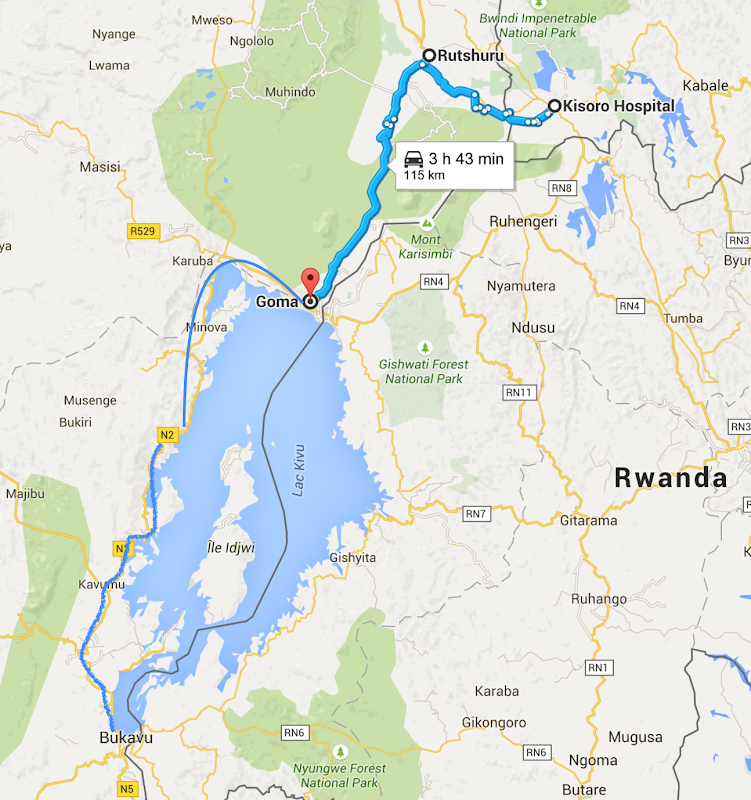
The border was very quiet and surprisingly pleasant affair. I exited Uganda in no time and was surprised to find Congolese officers speaking English (Congo is part of the French speaking Africa) and helpful. Which ironically almost made me turn the tail, when one of the senior officers - a kind elderly gentleman, looked me in the eyes for what seemed like ages and asked ‘Do you really want to go in?’. Like a father looking at a son who is about to do something stupid fully knowing that he cannot prevent the boy to make his own mistakes. If he would tell me I’m being stupid or some such I would just brush him off, but the soft caring approach sent my mind into a tailspin for a while. When I calmed down a bit I told myself to try few kms in and should it feel dodgy, I’ll just come back.
With that and lengthy cross border formalities settled, I set-off into Congo on a single vehicle dirt road heading west towards Rutshuru. On the way I passed through couple of poor villages, and drawn some encouragement from the local people who seemed surprised, but genuinely pleased to see me. Maybe this place isn’t as bad as I assumed.
After about 25 km of dirt I came to a T-junction with the main tar road running north-south between Rutshuru and Goma. The junction was manned by a ragtag gang of 20 or so armed individuals - some of them in military fatigues with inevitable AKs and RPGs, others outfitted in outrageously orange uniforms with orange hard hats - presumably some kind of traffic police, and few in civvies.
There was no traffic and they were clearly bored out of their mind in the midday heat, so the robocop on a huge silver two wheel contraption caught them completely off-guard. Soothed by the friendly reception on the border and in the villages, I gave them a friendly wave and turned left on tar heading to Goma. I almost made it past them when they sprung into action and the shouting started - stupidly I thought they are just overjoyed to see me and instead of opening up and buggering off I stopped for a friendly chit chat. They surrounded me in no time growling aggressively in French. I’m no hero and not particularly aggressive, but against a better judgement I ignored their superior numbers and firepower and started growling back in impolite English, pissed off by their poor manners. This quickly escalated into an idiotic shouting match - you know that spiel - if somebody doesn’t speak your language, just repeat it slower and louder again and again. It was getting a bit out of hand, but luckily one of the civvies did speak English and explained that I’ve just committed a transgressed Congolese traffic rules.
Contrary to the eastern Africa - former part of British empire, in Congo - former Belgian colony, you are supposed to drive on the right side of the road. As I came from the border on a dirt road wide enough for one car with no traffic whatsoever, I somehow missed that. When I came to the T junction, there was a stone size of my fist planted slap bang in the middle of the dirt road - an obvious roundabout for a local, but not to this idiot. As I was turning left, I passed to the left of the stone, endangering other people vehicles, should there be any. Contemplating my crime threw me off my shouting for a second which was enough for this rabble to get an upper hand in the psychological chess game. When I realized my mistake I was already on back foot, and while I resumed directing some abuse towards the crowd for appearances sake I felt losing ground and grudgingly started cooperate to an extent. They required inspection of my luggage (which nobody bothered for on the border), which I let them do watching their every move and then asked for a fine, which I declined. To break the impasse they said I need to go see their commander - a plump sweaty woman in dirty fatigues sitting in the shade of a tree on upturned beer case 50 meters away. Facing a lady (kind of), I finally came back to my senses and presented myself in the most presentable way I could muster, smiling, making cooing noises and throwing in a compliment or two (which of course she didn’t understand). She looked at me for a while without saying a word and then acquitted me with slight of a hand. I still had to go to the nearby hut with the English speaking civvy dude to register and pay 10$ fee, for which he refused to provide receipt. I considered hammering him to the ground - he was a diminutive man, but eventually just swore at him, walked out, got on bike and rode off. I’m not very proud of this whole episode, as I clearly behaved stupidly and it could have gone badly wrong, but funnily enough couldn’t help it feeling that making a nuisance of myself somehow granted me a degree of immunity I wouldn’t have if I would just submit readily.
After 80 or so km on a pretty good asphalt road winding through dense tropical forest with almost no traffic I arrived at the outskirts of Goma where I had to go through two other checkpoints, but these were manned by unarmed students of some kind and not threatening, just a nuisance.
If there ever was a geo pathological zone, Goma is it. Leaving aside for a second 20 years of war atrocities it went through, it is situated slap bang in-between an active volcano Nyiragongo and beautiful, but potentially even more deadly Lake Kivu.
This is what Wikipedia has to say about Nyiragongo:
Mount Nyiragongo is an active stratovolcano with an elevation of 3470 m. Since 1882, it has erupted at least 34 times, including many periods where activity was continuous for years at a time, often in the form of a churning lava lake in the crater. The lava emitted in eruptions at Nyiragongo is often unusually fluid. Whereas most lava flows move rather slowly and rarely pose a danger to human life, Nyiragongo's lava flows may race downhill at up to 60 miles per hour (up to 100 km/h). This is because of the extremely low silica content (the lava is mafic). Nowhere else in the world does such a steep-sided stratovolcano contain a lake of such fluid lava. Nyiragongo's proximity to heavily populated areas increases its potential for causing a natural disaster. On 10 January 1977, the crater walls fractured, and the lava lake drained in less than an hour. The lava flowed down the flanks of the volcano at speeds of up to 60 miles per hour on the upper slopes, overwhelming villages and killing at least 70 people.
Another major eruption of the volcano began on January 17, 2002. A 13 km fissure opened in the south flank of the volcano, spreading in a few hours from 2800 m to 1550 m elevation and reaching the outskirts of the city of Goma, the provincial capital on the northern shore of Lake Kivu. The fissure and flowed in a stream 200 to 1000 m wide and up to 2 m deep through Goma. Warnings had been given and 400,000 people were evacuated from the city across the Rwandan border into neighbouring Gisenyi during the eruption. Lava covered the northern end of the runway at Goma International Airport, leaving the southern two-thirds usable, and reached Lake Kivu. About 147 people died in the eruption from asphyxiation by carbon dioxide and buildings collapsing due to the lava and earthquakes.[2] At least 15% of Goma comprising 4,500 buildings were destroyed, leaving about 120,000 people homeless. The eruption was the most destructive effusive eruption in modern history.
As for the Lake Kivu:
Lake Kivu is a fresh water lake is one of three lakes that experience limnic eruptions. A limnic eruption, also referred to as a lake overturn, is a rare type of natural disaster in which dissolved carbon dioxide (CO2) suddenly erupts from deep lake water, suffocating wildlife, livestock and humans. Around the lake, geologists found evidence of massive biological extinctions about every thousand years, caused by outgassing events. The risk from a possible Lake Kivu overturn is catastrophic, dwarfing other documented lake overturns at Lakes Nyos and Monoun, because of the approximately two million people living in the lake basin. Here is a documentary on lake overturn: https://www.youtube.com/watch?v=WcaoajVDYA8.
Some location...
I arrived into the Goma proper in the late afternoon and started looking for accommodation. Locals looked at me with suspicion and weren’t much of a help as nobody spoke English. Eventually I bumped into patrol of Pakistani UN forces (‘peacemakers’, whatever that is), who directed me to a lodge frequented by the expats lucky enough to visit Goma. The lodge was a stark contrast to the decrepit war torn town - catering for wealthy (mostly government paid) foreigners, it was situated in a lovely garden on the shores of tranquil Lake Kivu. This was the most luxurious accommodation so far on the trip, but tired of all the hassle of the day and shunned by not exactly welcoming locals in town, I settled into one of the chalets, with the first bathtub I have seen since home.
The lodge:
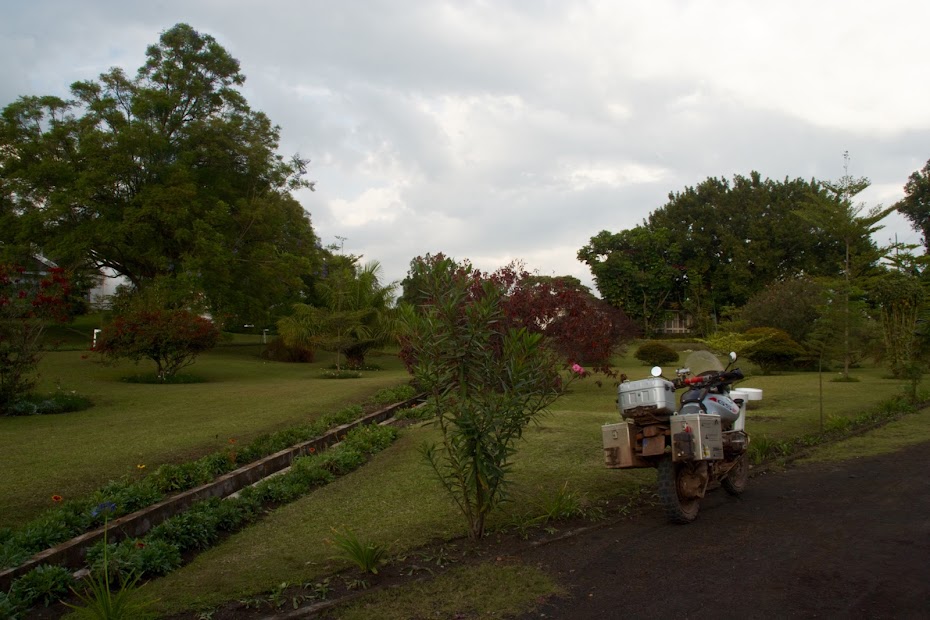
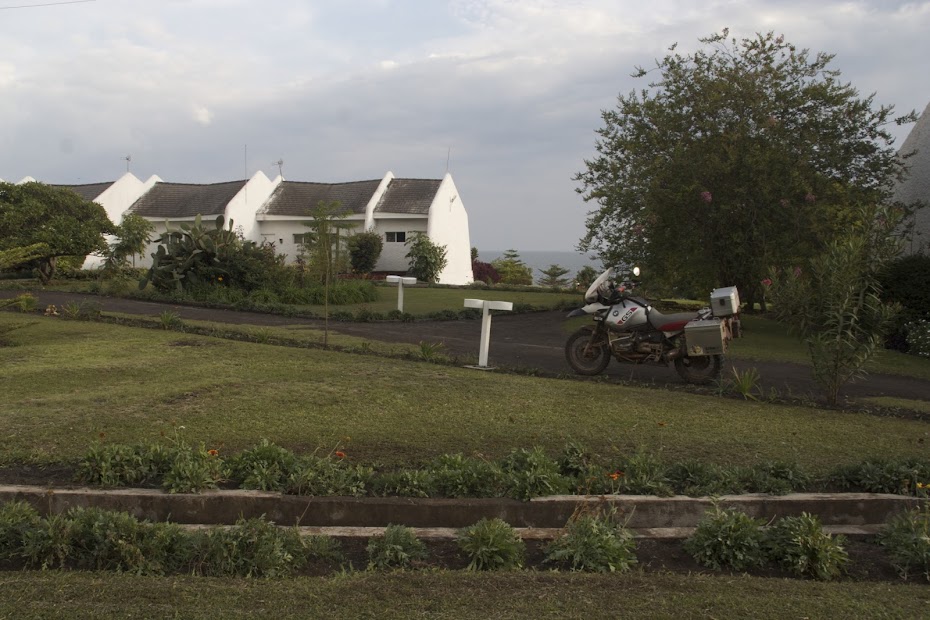

Next day, looking for some sightseeing tips, a friendly receptionist recommended a hike up the Nyiragongo. Now, I have never been on an active volcano, so I agreed immediately and she organized local taxi driver to come pick me up for the trip next day. I’ve spent rest of the day lounging about and doing few tentative walkabouts into the town. It seemed to me that this is probably about the toughest place on the planet. Unlike the rest of Africa, people - terrorized for decades by marauding gangs of rebels and government forces (be it Congolese, Rwandan or Ugandan - each of which took their turn at one point at on time or another to exploit the area), were not smiling at all - not even children - and generally kept their heads down. There was an ugly kind of karma involved as many of the locals were Hutu refugees from Rwanda, who had to run away after they partook in the Rwandan genocide and were eventually chased away by the Tutsi led rebel army.
Goma:
New settlements in the places destroyed by lava in 2002:
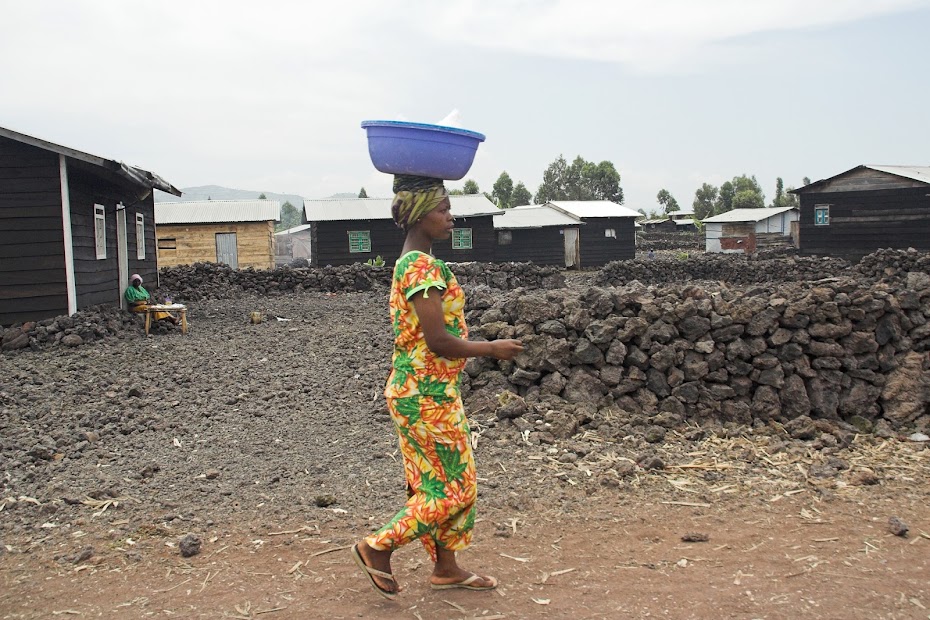
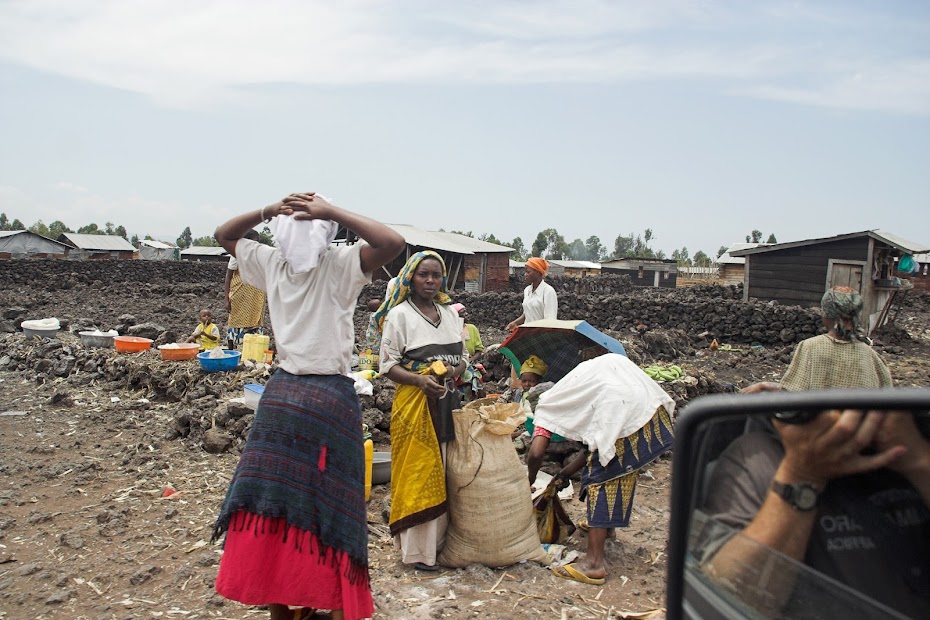
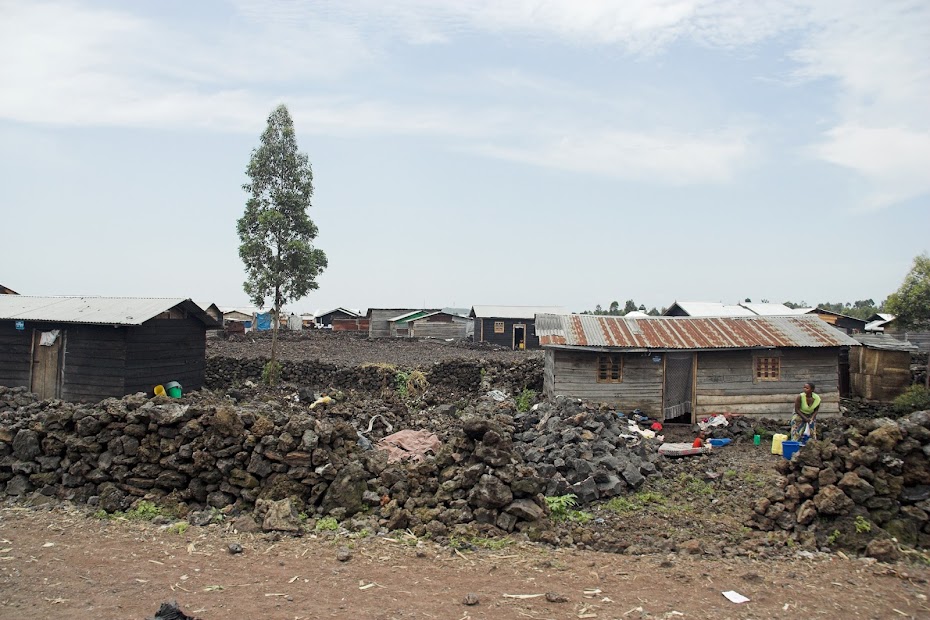
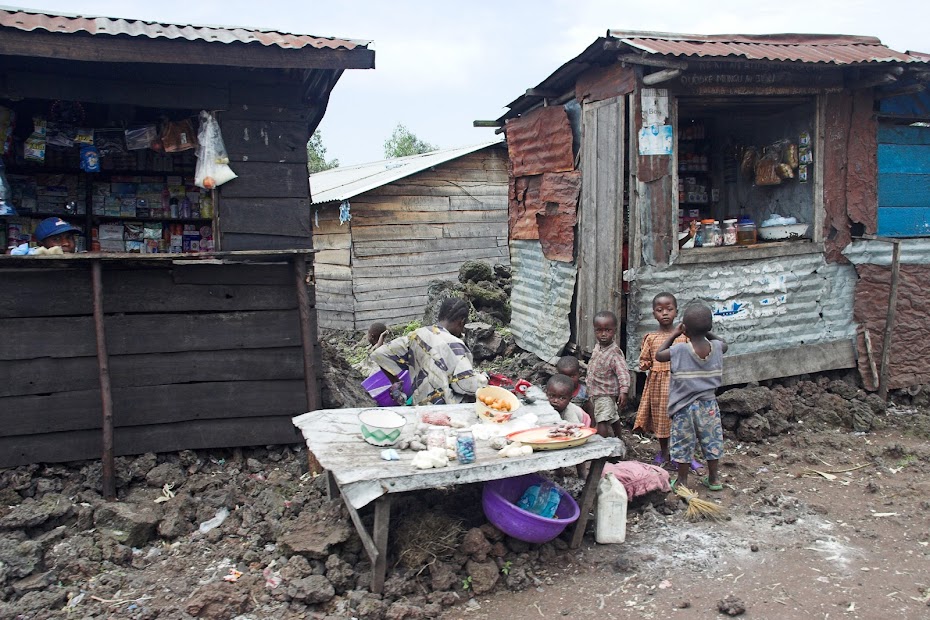
The most wide spread load carrying contraption - kick scooter:
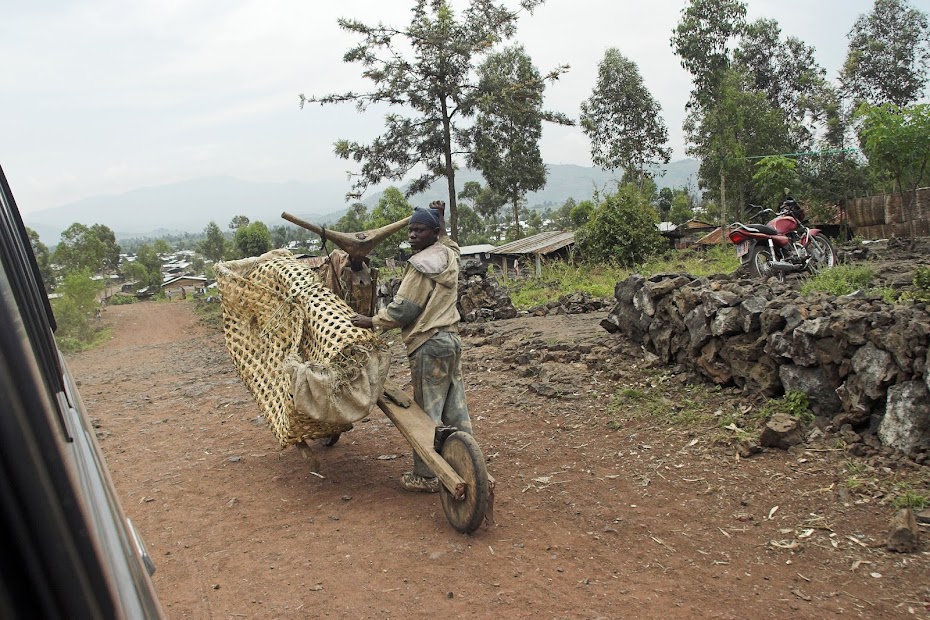
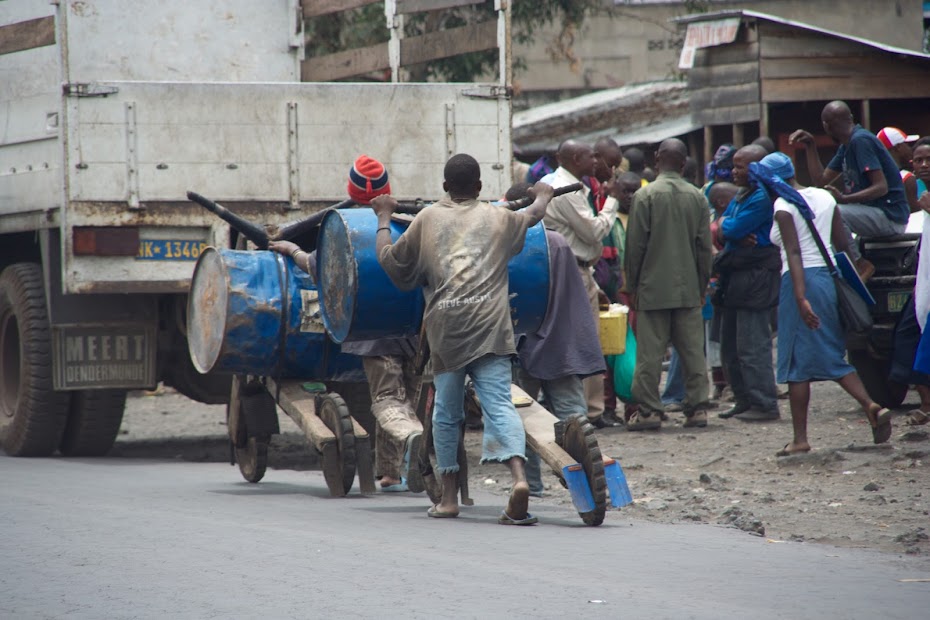
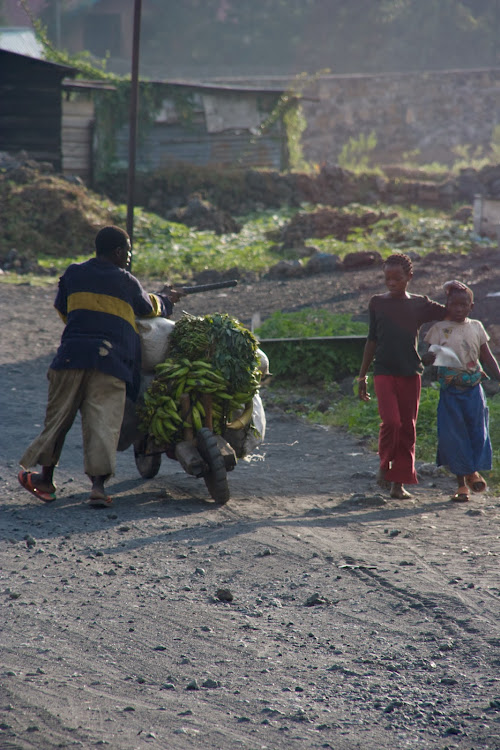
Nyiragongo hidden in the clouds:
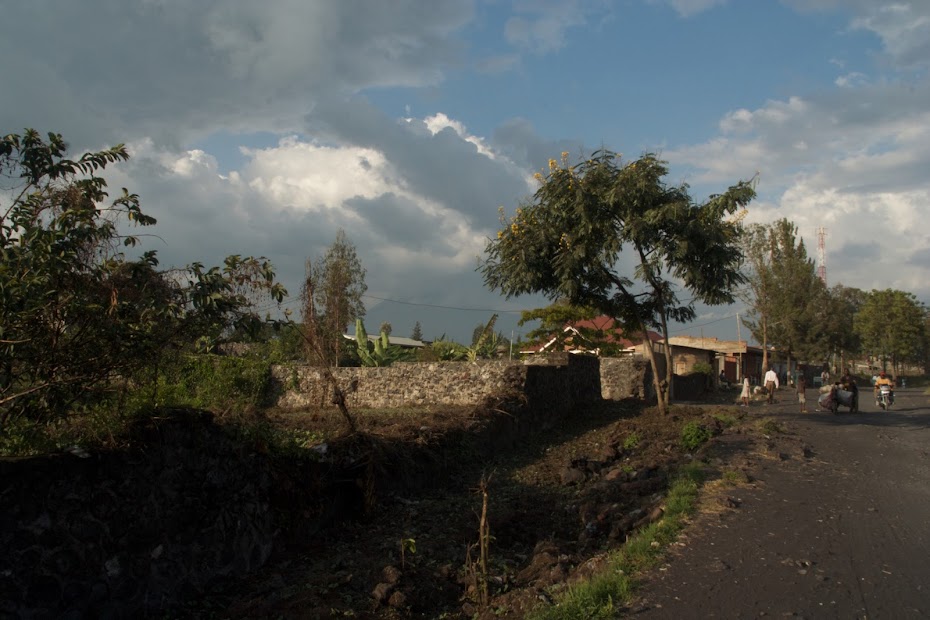
To be continued.
Or rather Democratic Republic of Congo, as there is a separate much smaller country officially called Congo adjacent to DRC on its northwest border. However for me DRC is the Congo and will continue calling it that further on.
Congo to me is the epitome of Africa. The name evokes deep distant sound of drumming in the jungle - mysterious, deeply unsettling, even threatening. Spread along (and far beyond) the banks of Congo river right in the middle of Africa it remained mysterious place for centuries, feared by Europeans who didn’t dare to venture inland into the green darkness of the jungle. It always had a power to stir deep primordial fear of the unknown in the hearts of outsiders, as shown in that literally classic Heart of Darkness (and inspired another film classic Apocalypse Now, even though that one took place in the jungles of Vietnam).
When at the end of 19th century the first European - british explorer Stanley - crossed Africa overland from East to West along the Congo river, out of the original crew of 50 only 4 made it to the other side alive. Unfortunately this conquest started a long history of Congo as a site of exploitation and war. The ruthless exploitation started by belgian king Leopold who turned Congo into his private fiefdom continued unabated post-independence by Congo’s own dictator Mobutu Sese Seko supported by the West in a bid to counter Soviet influence in Africa. After his fall in 1996 the country descended into prolonged civil war, resulting in a death of over 5 million people, the highest death count of any war since WW2.
At the time I arrived the war has fizzled out in most of the Congo and morphed into precarious, peace. However it was still prone to flare up here and there and nowhere more likely so than in the eastern Congo along the borders of Uganda and Rwanda, where each of these countries tried to exploit the power vacuum for their own means using one of the many rebel groups in the region as a proxy.
To assess wisdom of this venture I have spent a day in Kisoro - last town in Uganda before the border trying to get as much up to date information as possible. The indications seemed positive - Dutch manager of the guesthouse where I stayed said that since the last shooting about two weeks ago the situation calmed down and Chris from the Wadi Haifa gang told me via email that he did a day trip across the border to see gorillas few days before.
So I decided to give it a try. The plan was just a short trip along the border south to Goma about 120 km south, have a look around there, and if it looks OK circumvent from the west Lake Kivu to Bukavu where I would cross to Rwanda in Cyangugu. Like so:

The border was very quiet and surprisingly pleasant affair. I exited Uganda in no time and was surprised to find Congolese officers speaking English (Congo is part of the French speaking Africa) and helpful. Which ironically almost made me turn the tail, when one of the senior officers - a kind elderly gentleman, looked me in the eyes for what seemed like ages and asked ‘Do you really want to go in?’. Like a father looking at a son who is about to do something stupid fully knowing that he cannot prevent the boy to make his own mistakes. If he would tell me I’m being stupid or some such I would just brush him off, but the soft caring approach sent my mind into a tailspin for a while. When I calmed down a bit I told myself to try few kms in and should it feel dodgy, I’ll just come back.
With that and lengthy cross border formalities settled, I set-off into Congo on a single vehicle dirt road heading west towards Rutshuru. On the way I passed through couple of poor villages, and drawn some encouragement from the local people who seemed surprised, but genuinely pleased to see me. Maybe this place isn’t as bad as I assumed.
After about 25 km of dirt I came to a T-junction with the main tar road running north-south between Rutshuru and Goma. The junction was manned by a ragtag gang of 20 or so armed individuals - some of them in military fatigues with inevitable AKs and RPGs, others outfitted in outrageously orange uniforms with orange hard hats - presumably some kind of traffic police, and few in civvies.
There was no traffic and they were clearly bored out of their mind in the midday heat, so the robocop on a huge silver two wheel contraption caught them completely off-guard. Soothed by the friendly reception on the border and in the villages, I gave them a friendly wave and turned left on tar heading to Goma. I almost made it past them when they sprung into action and the shouting started - stupidly I thought they are just overjoyed to see me and instead of opening up and buggering off I stopped for a friendly chit chat. They surrounded me in no time growling aggressively in French. I’m no hero and not particularly aggressive, but against a better judgement I ignored their superior numbers and firepower and started growling back in impolite English, pissed off by their poor manners. This quickly escalated into an idiotic shouting match - you know that spiel - if somebody doesn’t speak your language, just repeat it slower and louder again and again. It was getting a bit out of hand, but luckily one of the civvies did speak English and explained that I’ve just committed a transgressed Congolese traffic rules.
Contrary to the eastern Africa - former part of British empire, in Congo - former Belgian colony, you are supposed to drive on the right side of the road. As I came from the border on a dirt road wide enough for one car with no traffic whatsoever, I somehow missed that. When I came to the T junction, there was a stone size of my fist planted slap bang in the middle of the dirt road - an obvious roundabout for a local, but not to this idiot. As I was turning left, I passed to the left of the stone, endangering other people vehicles, should there be any. Contemplating my crime threw me off my shouting for a second which was enough for this rabble to get an upper hand in the psychological chess game. When I realized my mistake I was already on back foot, and while I resumed directing some abuse towards the crowd for appearances sake I felt losing ground and grudgingly started cooperate to an extent. They required inspection of my luggage (which nobody bothered for on the border), which I let them do watching their every move and then asked for a fine, which I declined. To break the impasse they said I need to go see their commander - a plump sweaty woman in dirty fatigues sitting in the shade of a tree on upturned beer case 50 meters away. Facing a lady (kind of), I finally came back to my senses and presented myself in the most presentable way I could muster, smiling, making cooing noises and throwing in a compliment or two (which of course she didn’t understand). She looked at me for a while without saying a word and then acquitted me with slight of a hand. I still had to go to the nearby hut with the English speaking civvy dude to register and pay 10$ fee, for which he refused to provide receipt. I considered hammering him to the ground - he was a diminutive man, but eventually just swore at him, walked out, got on bike and rode off. I’m not very proud of this whole episode, as I clearly behaved stupidly and it could have gone badly wrong, but funnily enough couldn’t help it feeling that making a nuisance of myself somehow granted me a degree of immunity I wouldn’t have if I would just submit readily.
After 80 or so km on a pretty good asphalt road winding through dense tropical forest with almost no traffic I arrived at the outskirts of Goma where I had to go through two other checkpoints, but these were manned by unarmed students of some kind and not threatening, just a nuisance.
If there ever was a geo pathological zone, Goma is it. Leaving aside for a second 20 years of war atrocities it went through, it is situated slap bang in-between an active volcano Nyiragongo and beautiful, but potentially even more deadly Lake Kivu.
This is what Wikipedia has to say about Nyiragongo:
Mount Nyiragongo is an active stratovolcano with an elevation of 3470 m. Since 1882, it has erupted at least 34 times, including many periods where activity was continuous for years at a time, often in the form of a churning lava lake in the crater. The lava emitted in eruptions at Nyiragongo is often unusually fluid. Whereas most lava flows move rather slowly and rarely pose a danger to human life, Nyiragongo's lava flows may race downhill at up to 60 miles per hour (up to 100 km/h). This is because of the extremely low silica content (the lava is mafic). Nowhere else in the world does such a steep-sided stratovolcano contain a lake of such fluid lava. Nyiragongo's proximity to heavily populated areas increases its potential for causing a natural disaster. On 10 January 1977, the crater walls fractured, and the lava lake drained in less than an hour. The lava flowed down the flanks of the volcano at speeds of up to 60 miles per hour on the upper slopes, overwhelming villages and killing at least 70 people.
Another major eruption of the volcano began on January 17, 2002. A 13 km fissure opened in the south flank of the volcano, spreading in a few hours from 2800 m to 1550 m elevation and reaching the outskirts of the city of Goma, the provincial capital on the northern shore of Lake Kivu. The fissure and flowed in a stream 200 to 1000 m wide and up to 2 m deep through Goma. Warnings had been given and 400,000 people were evacuated from the city across the Rwandan border into neighbouring Gisenyi during the eruption. Lava covered the northern end of the runway at Goma International Airport, leaving the southern two-thirds usable, and reached Lake Kivu. About 147 people died in the eruption from asphyxiation by carbon dioxide and buildings collapsing due to the lava and earthquakes.[2] At least 15% of Goma comprising 4,500 buildings were destroyed, leaving about 120,000 people homeless. The eruption was the most destructive effusive eruption in modern history.
As for the Lake Kivu:
Lake Kivu is a fresh water lake is one of three lakes that experience limnic eruptions. A limnic eruption, also referred to as a lake overturn, is a rare type of natural disaster in which dissolved carbon dioxide (CO2) suddenly erupts from deep lake water, suffocating wildlife, livestock and humans. Around the lake, geologists found evidence of massive biological extinctions about every thousand years, caused by outgassing events. The risk from a possible Lake Kivu overturn is catastrophic, dwarfing other documented lake overturns at Lakes Nyos and Monoun, because of the approximately two million people living in the lake basin. Here is a documentary on lake overturn: https://www.youtube.com/watch?v=WcaoajVDYA8.
Some location...
I arrived into the Goma proper in the late afternoon and started looking for accommodation. Locals looked at me with suspicion and weren’t much of a help as nobody spoke English. Eventually I bumped into patrol of Pakistani UN forces (‘peacemakers’, whatever that is), who directed me to a lodge frequented by the expats lucky enough to visit Goma. The lodge was a stark contrast to the decrepit war torn town - catering for wealthy (mostly government paid) foreigners, it was situated in a lovely garden on the shores of tranquil Lake Kivu. This was the most luxurious accommodation so far on the trip, but tired of all the hassle of the day and shunned by not exactly welcoming locals in town, I settled into one of the chalets, with the first bathtub I have seen since home.
The lodge:



Next day, looking for some sightseeing tips, a friendly receptionist recommended a hike up the Nyiragongo. Now, I have never been on an active volcano, so I agreed immediately and she organized local taxi driver to come pick me up for the trip next day. I’ve spent rest of the day lounging about and doing few tentative walkabouts into the town. It seemed to me that this is probably about the toughest place on the planet. Unlike the rest of Africa, people - terrorized for decades by marauding gangs of rebels and government forces (be it Congolese, Rwandan or Ugandan - each of which took their turn at one point at on time or another to exploit the area), were not smiling at all - not even children - and generally kept their heads down. There was an ugly kind of karma involved as many of the locals were Hutu refugees from Rwanda, who had to run away after they partook in the Rwandan genocide and were eventually chased away by the Tutsi led rebel army.
Goma:
New settlements in the places destroyed by lava in 2002:




The most wide spread load carrying contraption - kick scooter:



Nyiragongo hidden in the clouds:

To be continued.
- Joined
- Sep 13, 2010
- Messages
- 3,605
- Reaction score
- 174
- Location
- I would rather be in Great Brak...
- Bike
- Honda CRF-1000L Africa Twin
Gets better and better ... I am, of course, not surprised by this anymore.
... oh, and thanks for the HD pic's of the CRF 1000, best I have seen yet. Might have to change to the Rally colour scheme.
8)
... oh, and thanks for the HD pic's of the CRF 1000, best I have seen yet. Might have to change to the Rally colour scheme.
8)
XTJoe
Race Dog
Thanks for sharing :thumleft: awesome trip
Congo - part 2
Next morning I packed whatever I needed for a two day hike up and down Nyiragongo with a sleepover on top and left the rest with the bike in the lodge. The arranged taxi arrived and we drove about 15 km out of town on the same road I have arrived in from Uganda to the Nyiragongo park reception, where I was to start the hike. The reception was basically a house taken over by the families of park rangers - I”m sure unpaid for years, and I hooked up there with my guide for the trip - John. He said I will need two porters to carry my mattress, tent, sleeping bag, a food and water for two days, which seemed unnecessary as I used to hike in the mountains carrying my own stuff. But then seeing that I’m a very rare source of revenue for these families I didn’t push it, agreed to two porters who turned out to be father and a son and paid a total fee of about 120 USD.
Nyiragongo:

John, with obligatory gun. I kept wondering if it was and AK47 or indeed our own Czech vz.58 - I flunked out of the army service, so wasn't sure:
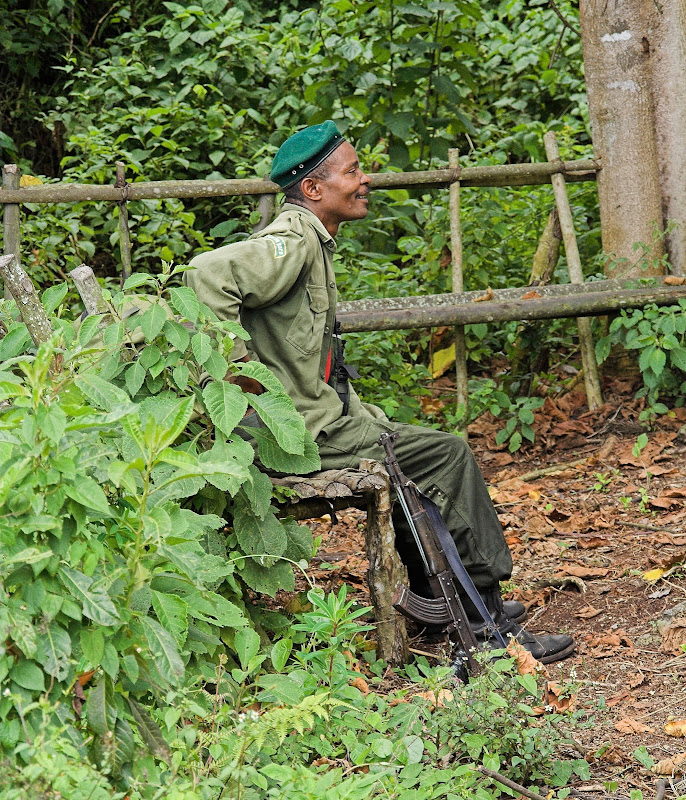
They packed my stuff into the white nylon bags used to store crops put them on their heads and we set-off. The hike wasn’t exactly a walk in the park - we had almost 2000 altitude meters to climb and by the time we set-off it was almost midday and hot.
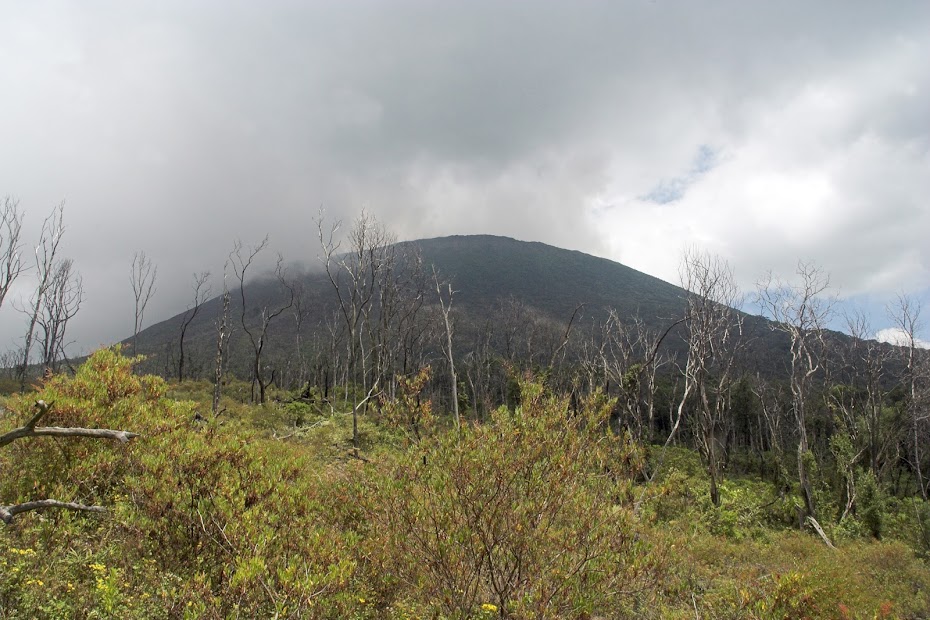
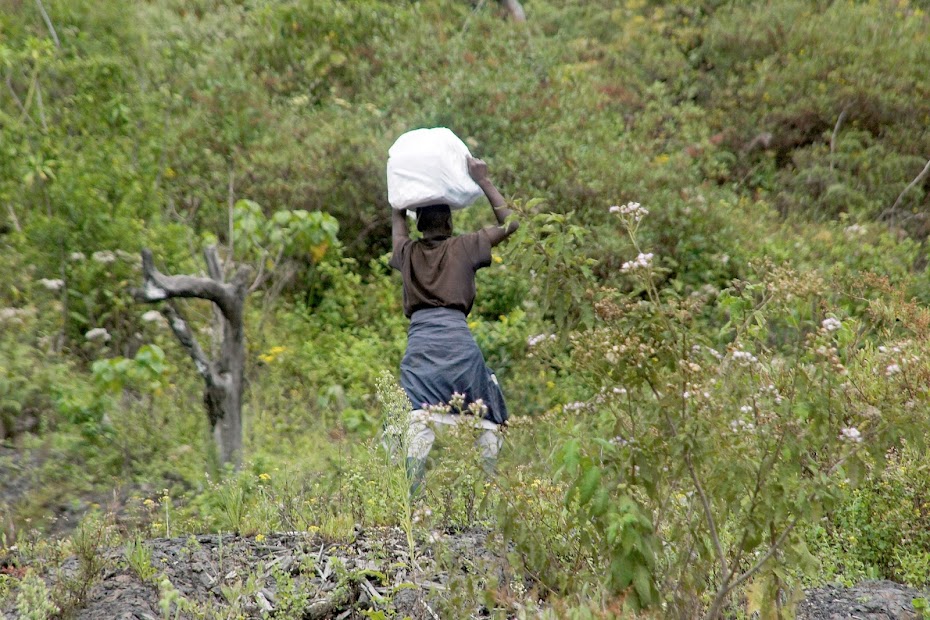
The fissure at the side of the mountain, through which lava poured out in 2002 and destroyed part of Goma:

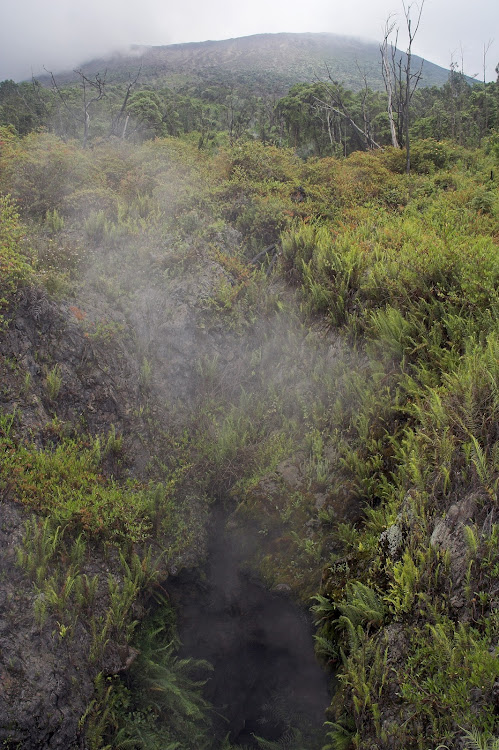
John and the porters (sorry, don't remember their names), taking break over the fissure:
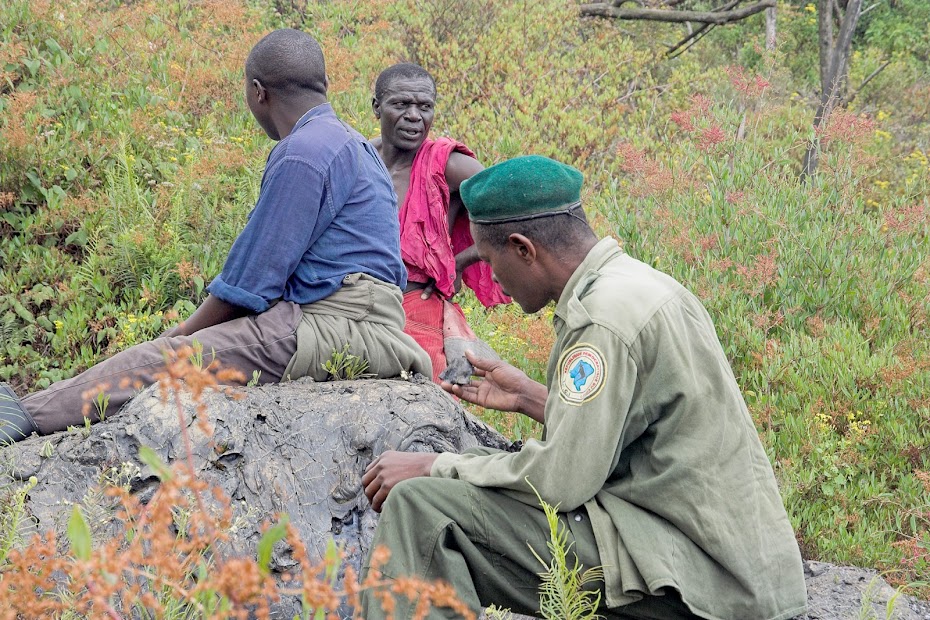
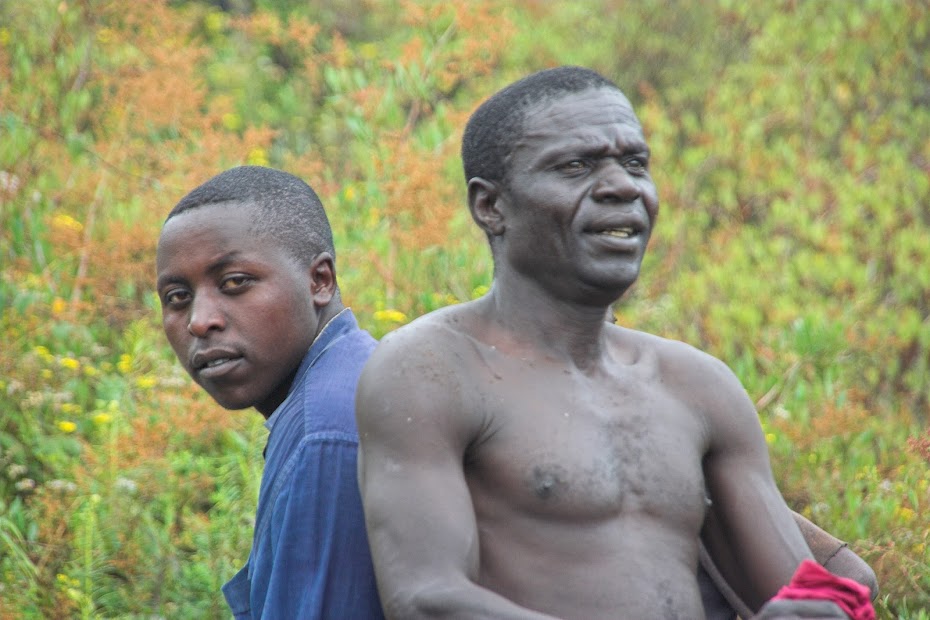
We have made it to the rim of the crater at the top at about 4 pm. The view down the massive 2 km wide crater with lava lake 800 meters below the rim was very impressive for this volcano virgin.
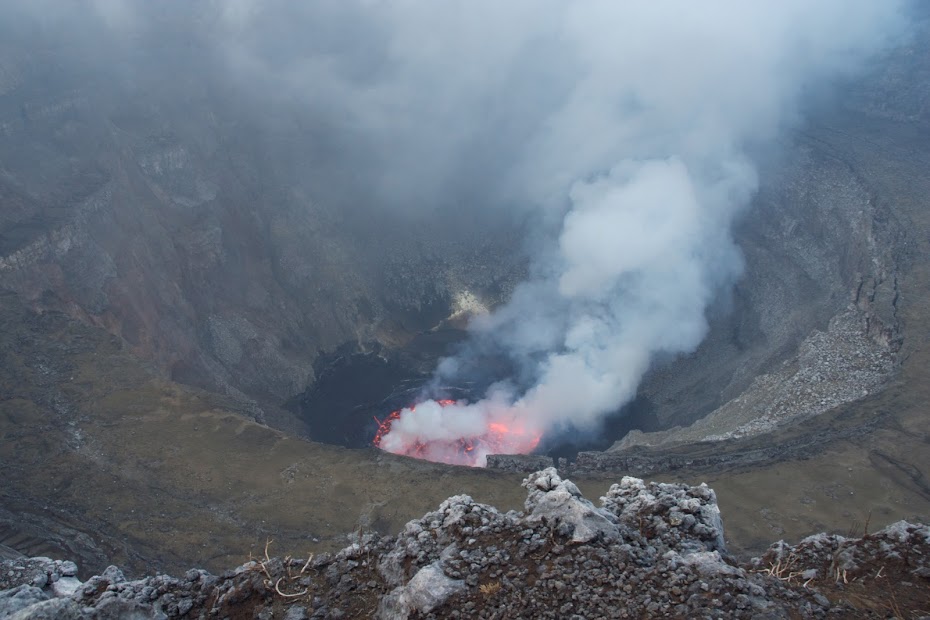

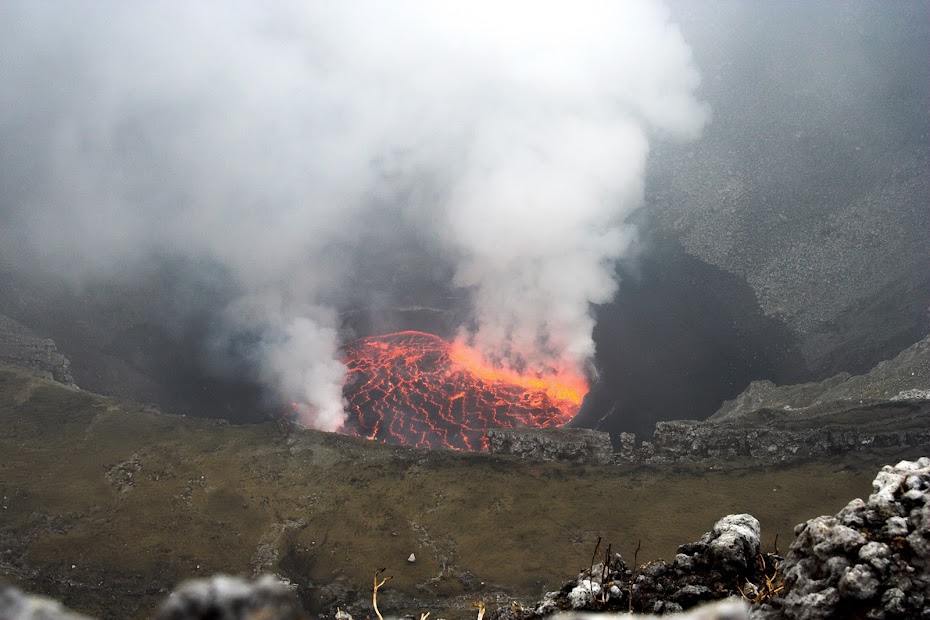
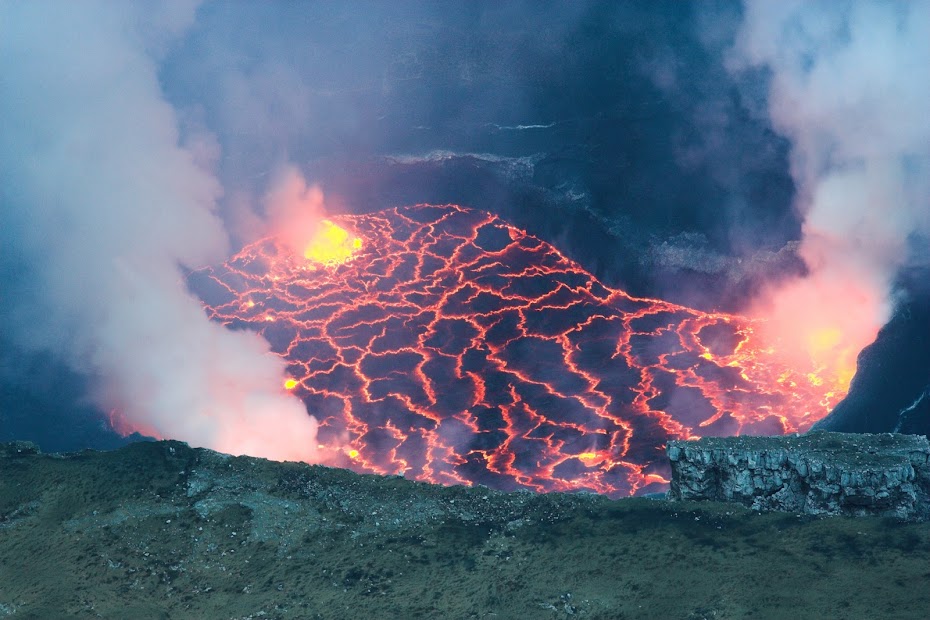

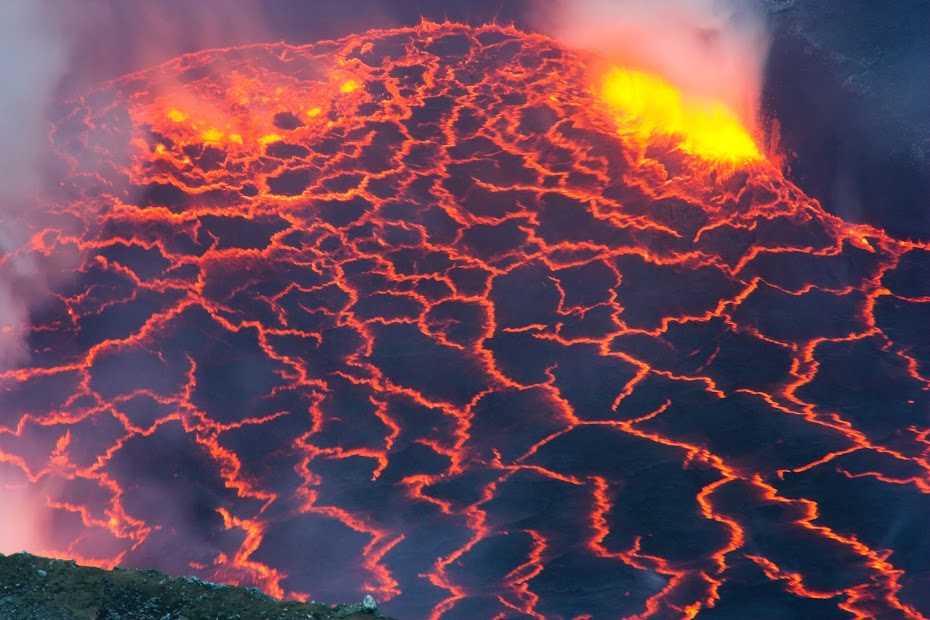
With my initial curiosity satisfied, we set-up camp on the upwind side of the crater out of the poisonous sulphur fumes. With camp set-up I wanted to walk the crater circumference and if possible visit a crazy French volcanologist who lived somewhere on the other side of the crater monitoring volcanic activity and serving as an early warning system for Goma underneath, dodging occasional robbery attacks from whatever rebel movement was the flavour of the month and desperate enough to climb up desolate volcano for few pennies.
Leaving porters in the camp John and I went for the walk, but soon walked into the column of sickening sulphur killing anything alive on that side of the crater. We walked in it for a bit with John trailing me solemnly, but eventually I decided that we’ve been intoxicated enough and we turned back.
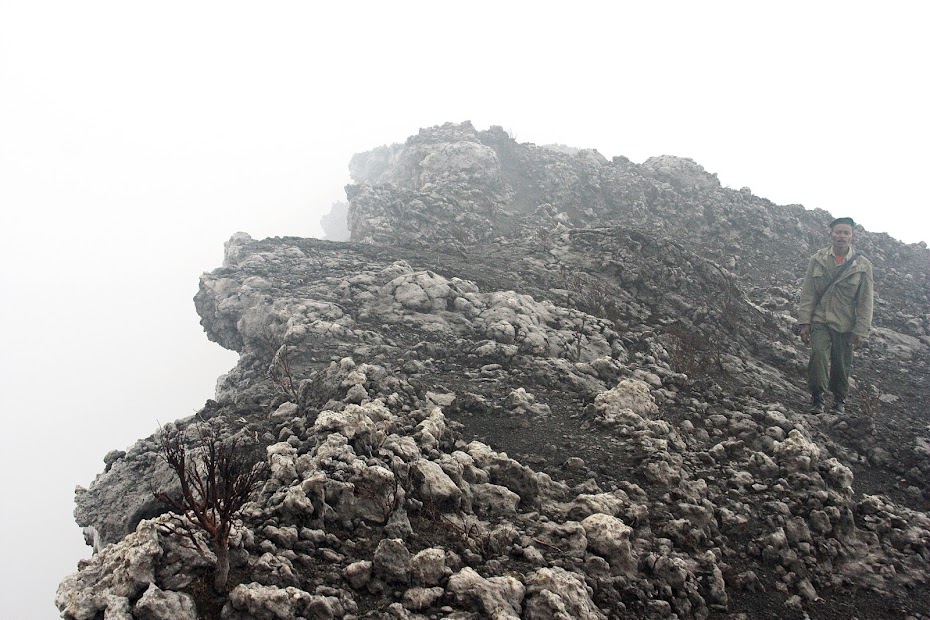
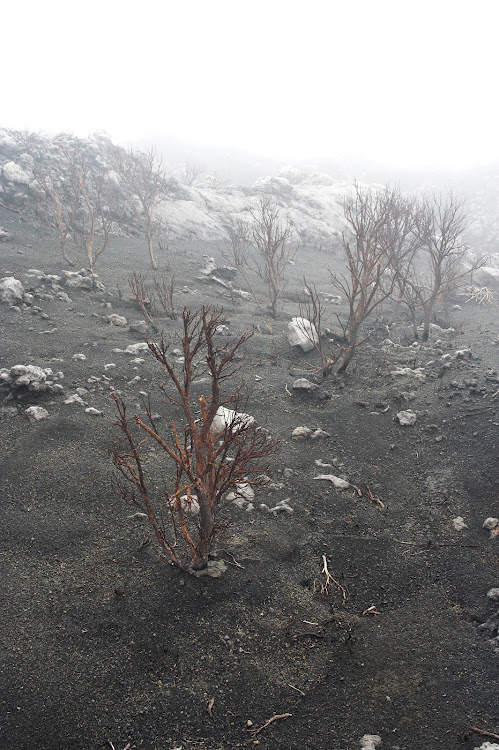
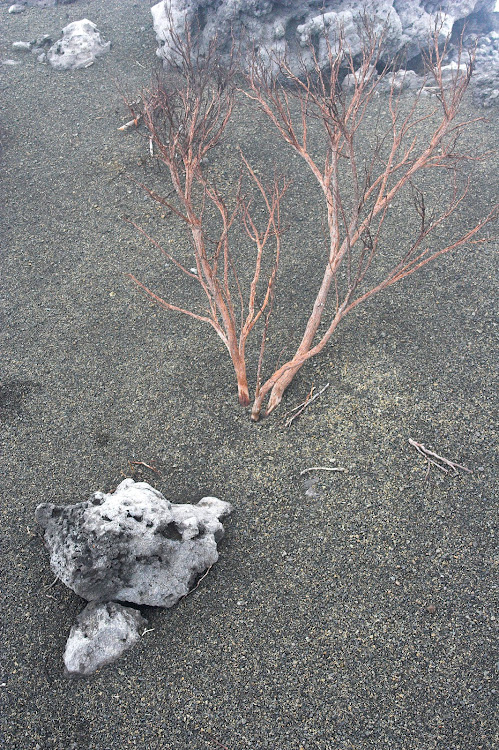
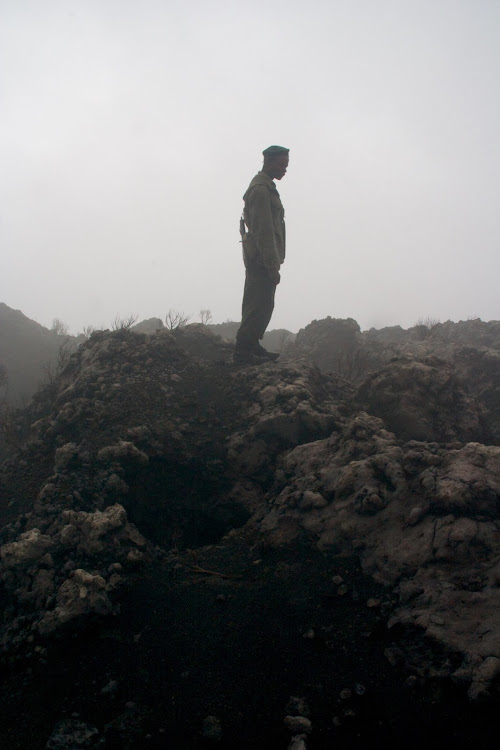
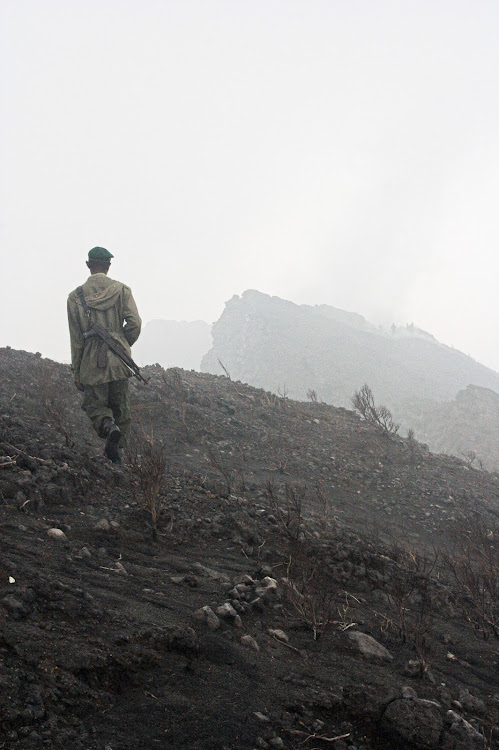
I was very surprised to find a group of 7-8 French men and women and their support team at our camp. They were a group of volcano enthusiasts (didn’t have a clue there are people like that) on their two week holiday in Africa fully dedicated to staring down a volcano or two. They’ve spent the first week in Tanzania sitting on top of a volcano called Oldoinyo Lengai, towering over Lake Natron on the eastern flank of much more famous (but completely inactive by now) Ngorongoro crater. For the second week they came here - to one of the most dodgy areas in the world to sit on top of another crater devoid of life breathing sulphur staring at red lava for next 4 days. They came ready with the camping chairs and Gucci gas masks. Some holiday… They were a nice bunch though, and gave me information about Oldoinyo Lengai which I never heard of before, but pencilled it down for possible visit later as I was heading into the area.
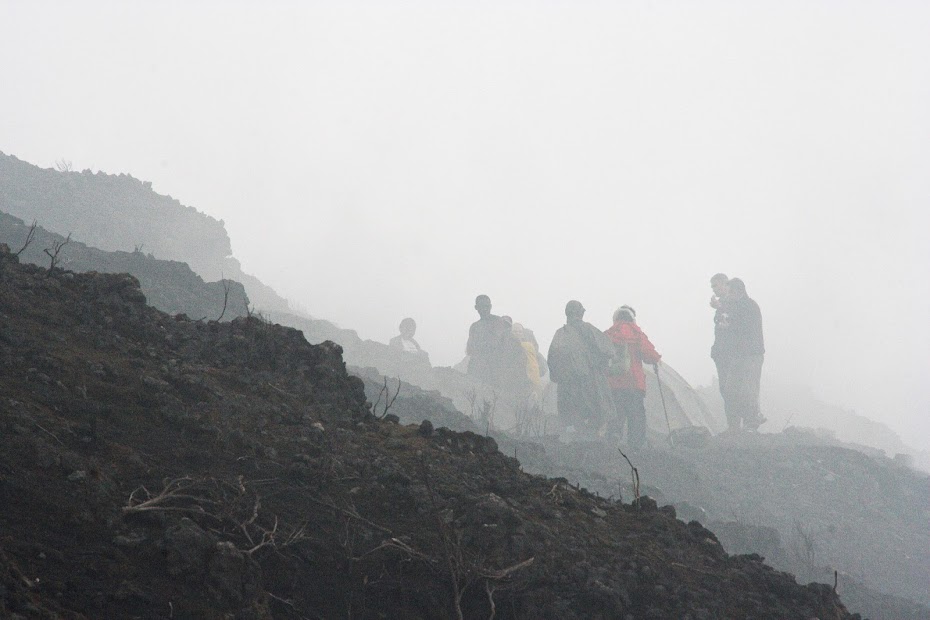
Back in camp I started to cook a dinner of smash and bangers and was quite dismayed to find out that my companions didn’t bring any food for themselves - contrary to what I was told when arranging the trip. Now I should have known better based on my experience in Simiens in Ethiopia, but got complacent when I was assured they will have food. I wasn’t pissed off because I had to provide the food, but because they didn’t tell me to and so I haven’t brought enough for the 4 of us - I brought just enough for me. We ended up all sharing the one meal I planned for myself and some biscuits.
After dinner I positioned myself at the top of the rim to try take some night pictures with my tragically slow lenses of the lava below. Like so:
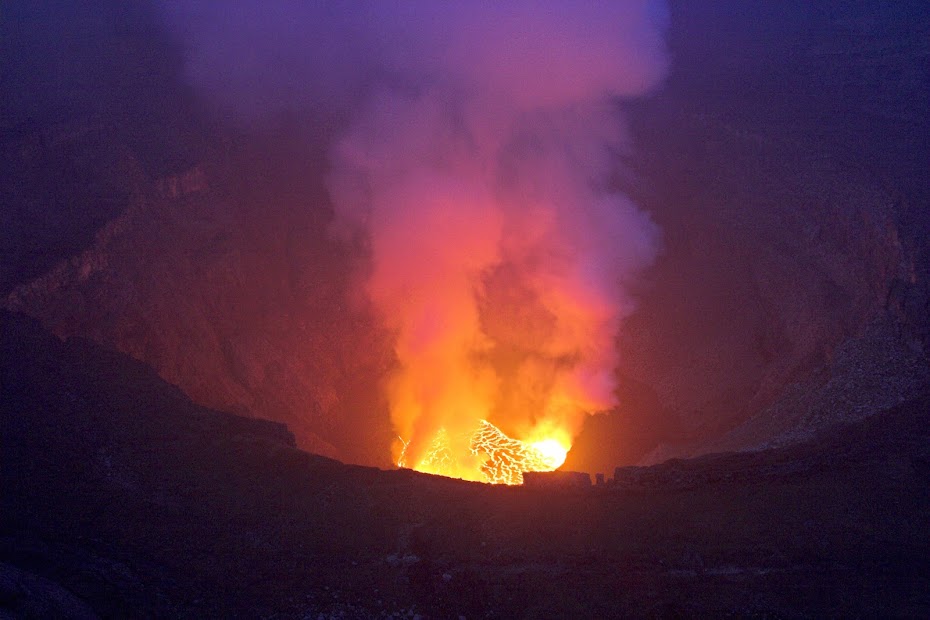
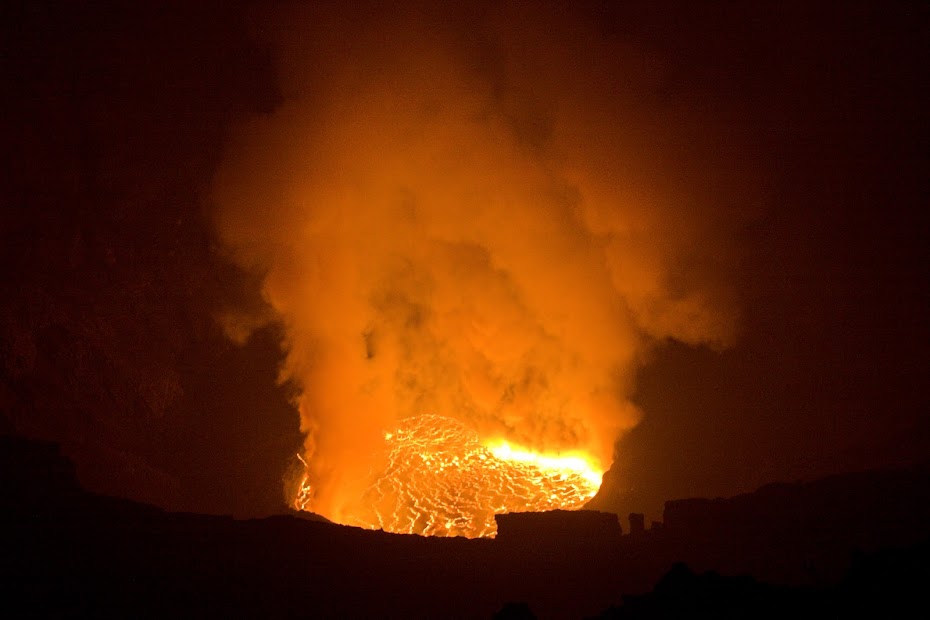
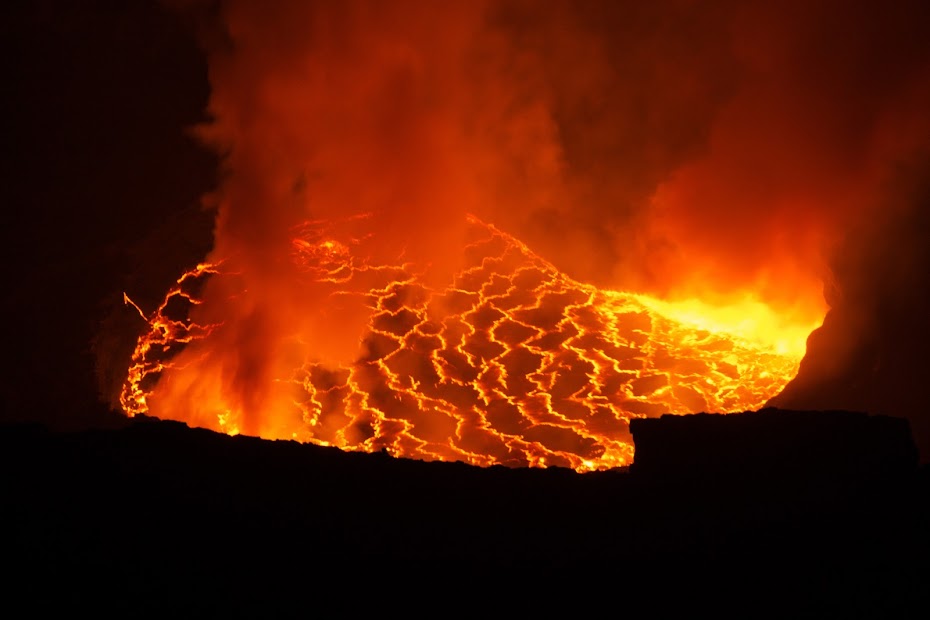
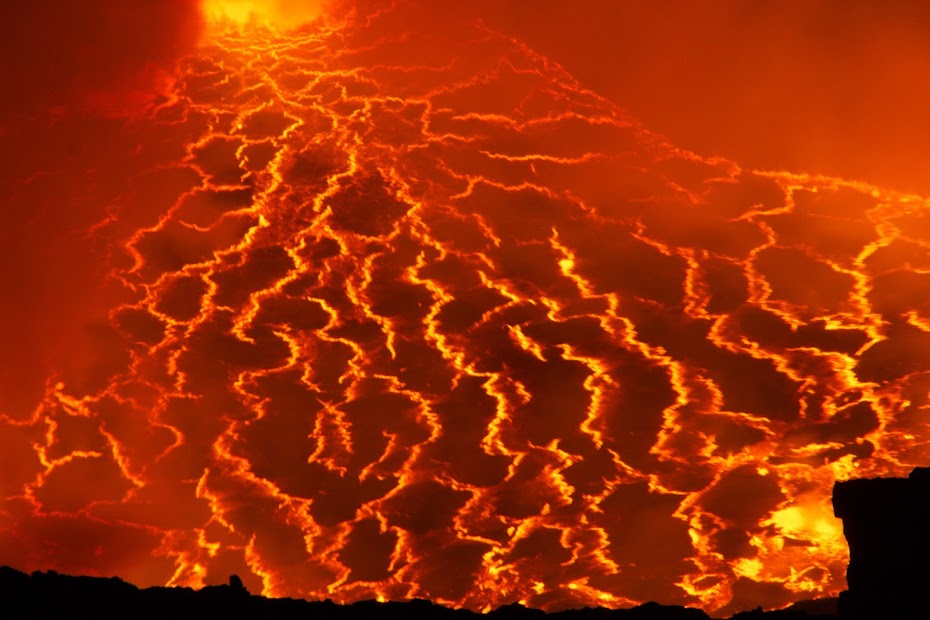
In the morning, after a cold night at about 3,500 meters, we had a quick breakfast of few remaining biscuits, broke down the camp and set-off back down:
On the way down walking through a clearing where lava destroyed the forest:
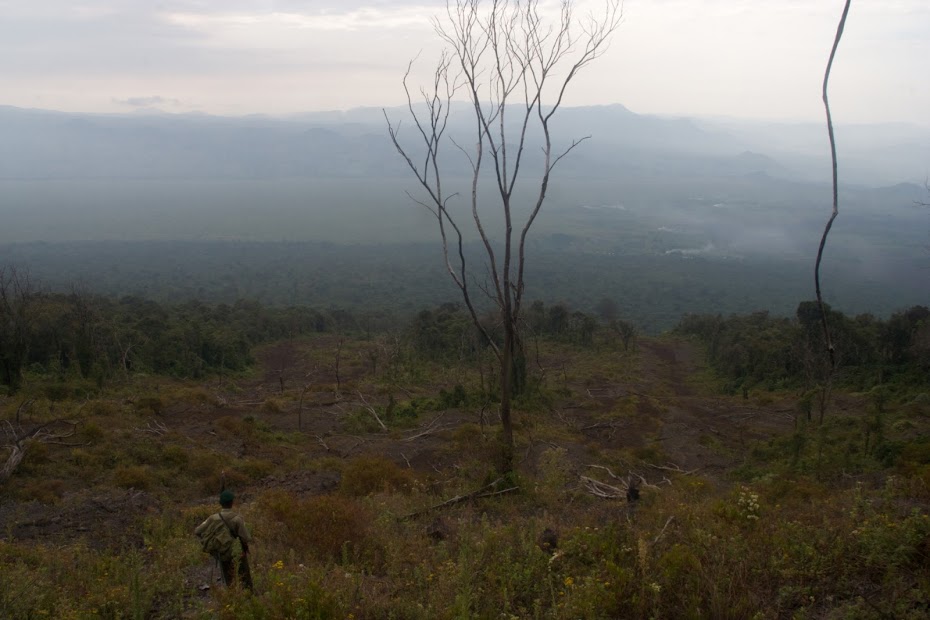
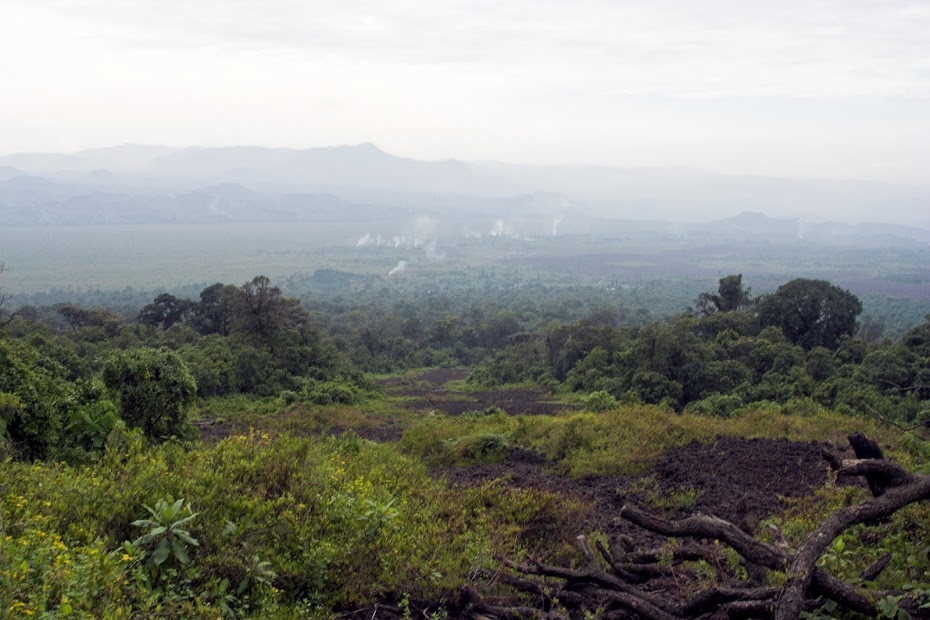
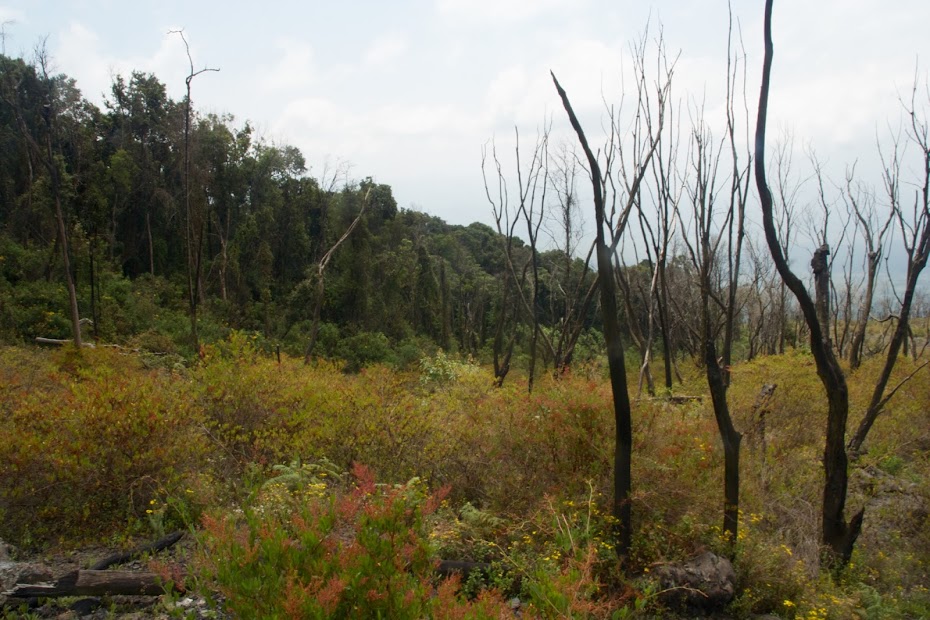
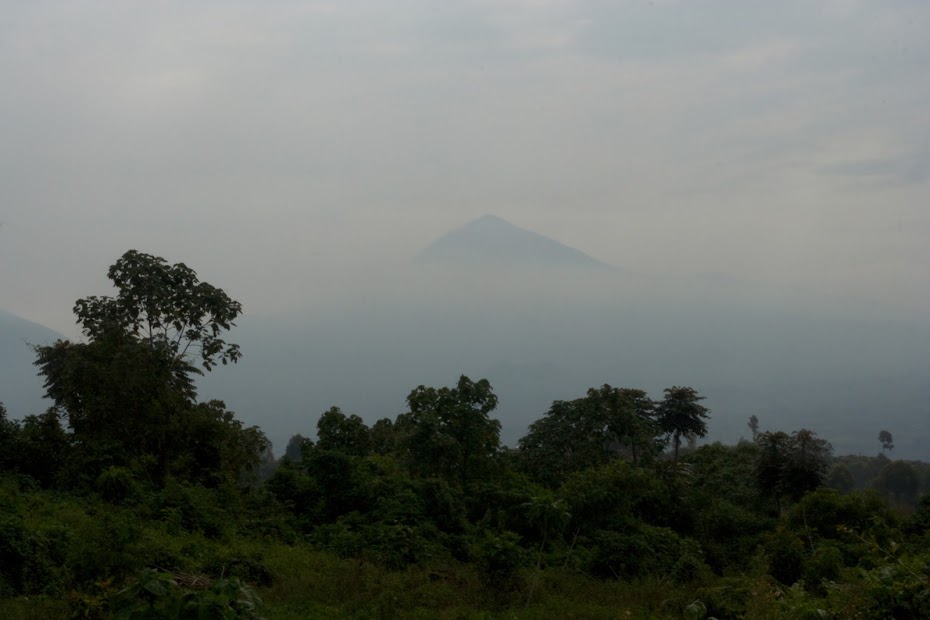
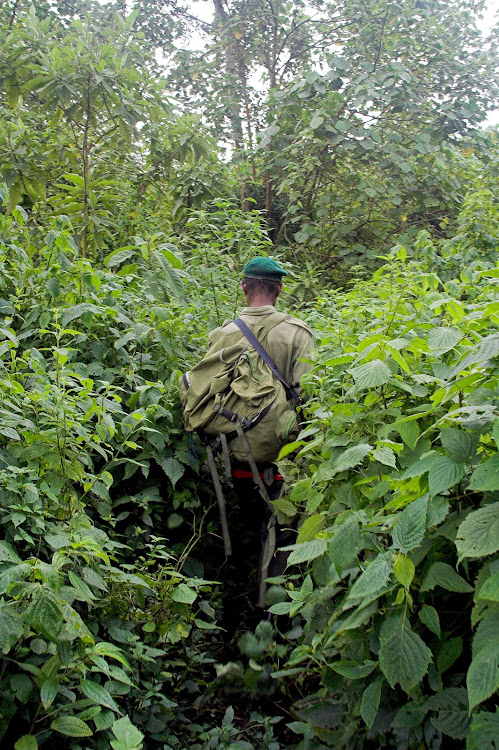
Back at the park reception we were welcomed by the families of my companions, and - while waiting for my taxi to pick me up - chatted about life here. It wasn’t good is the least I can say. They weren’t paid by government for years and had to find ways to sustain their families. I assumed that the money I paid for the trip (not just the tip I gave them on return) will end up in their pockets. And who can blame them - I didn’t. On top of that they used to get attacked regularly by different gangs of ‘rebels’ and armies passing through the area - John’s mother and brother were killed by the Rwandan army during their punitive excursion into Congo against the exiled Hutus. This was properly depressing stuff.
Images taken while waiting for the taxi and on the taxi ride back to Goma:
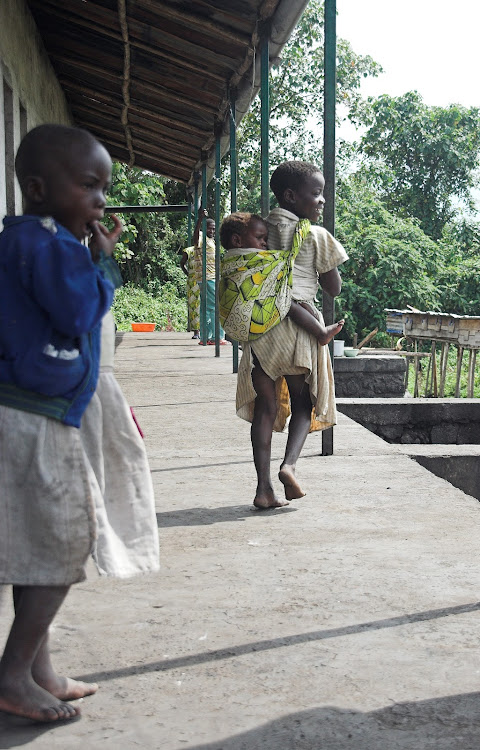
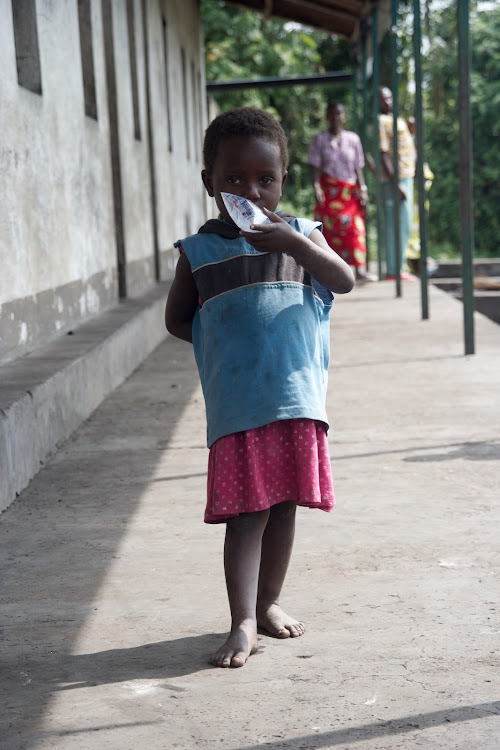
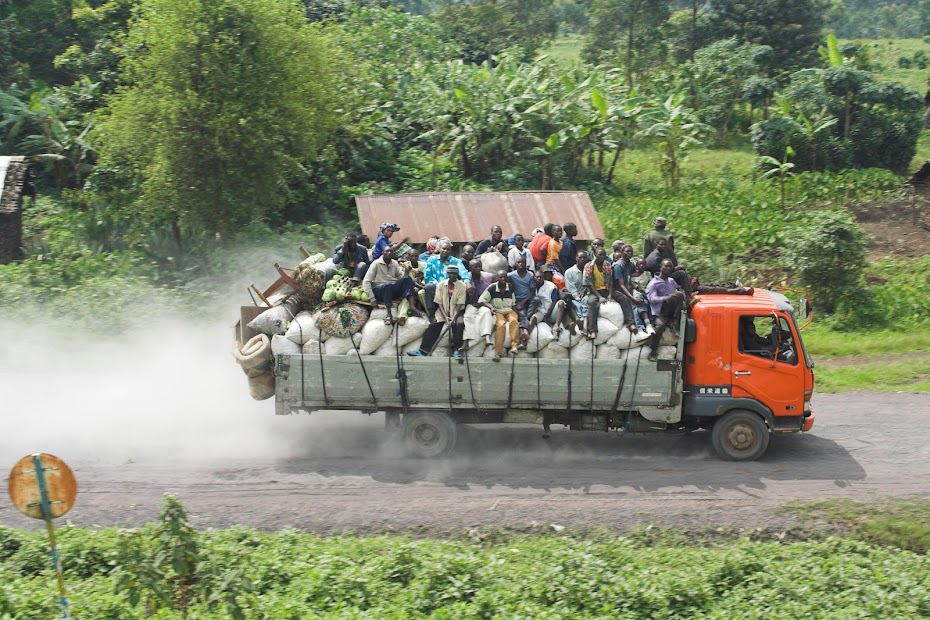
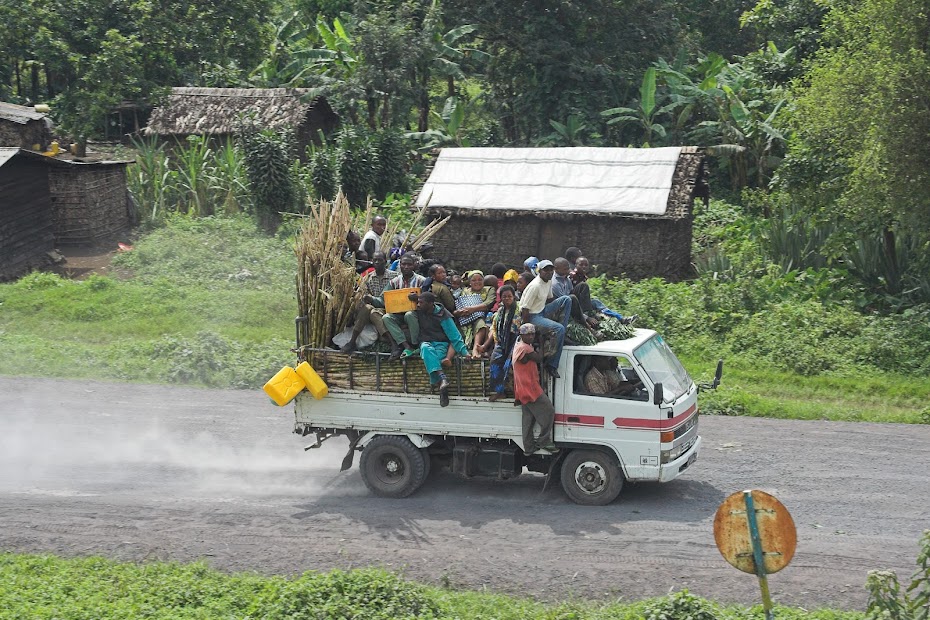
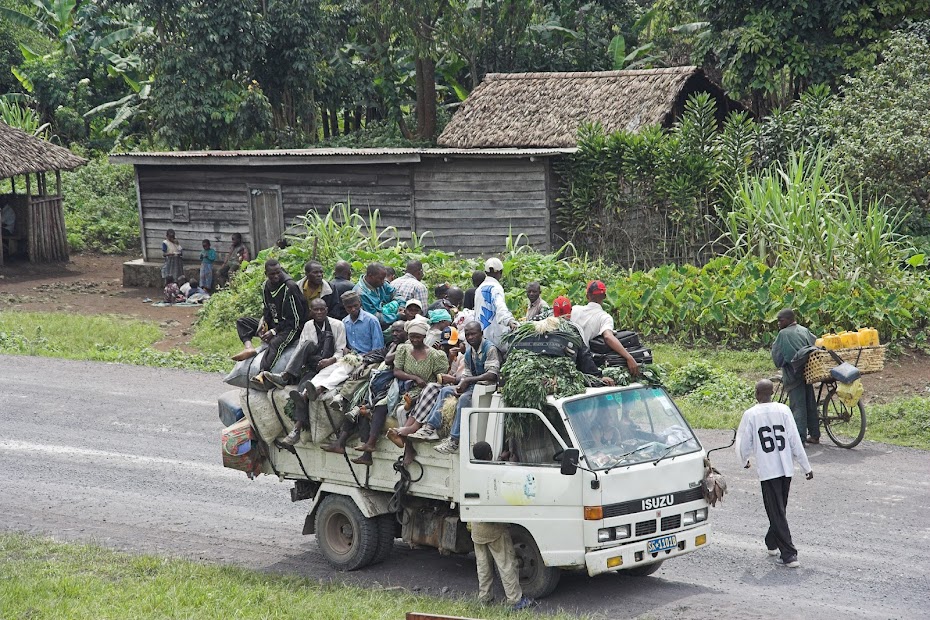
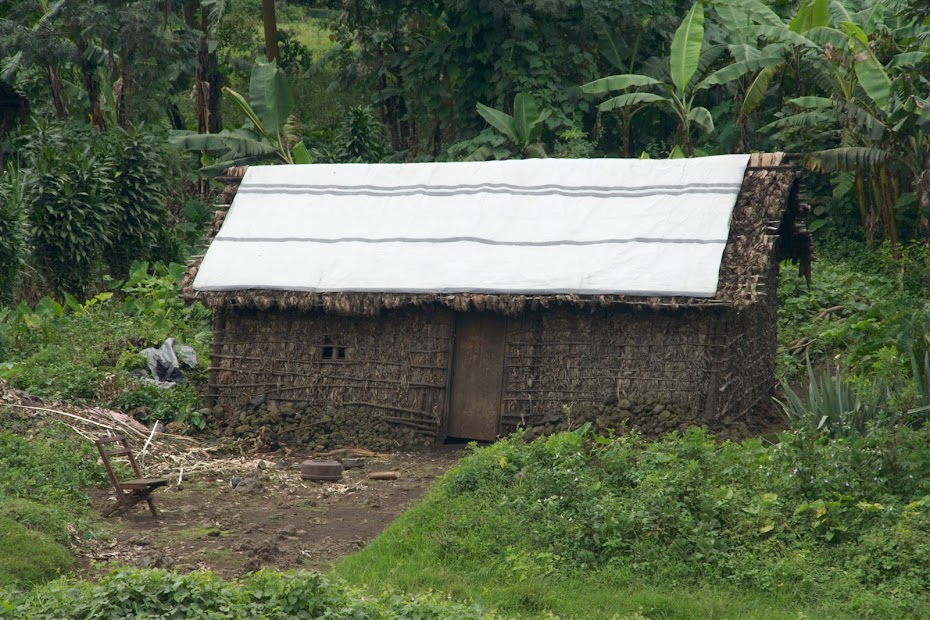
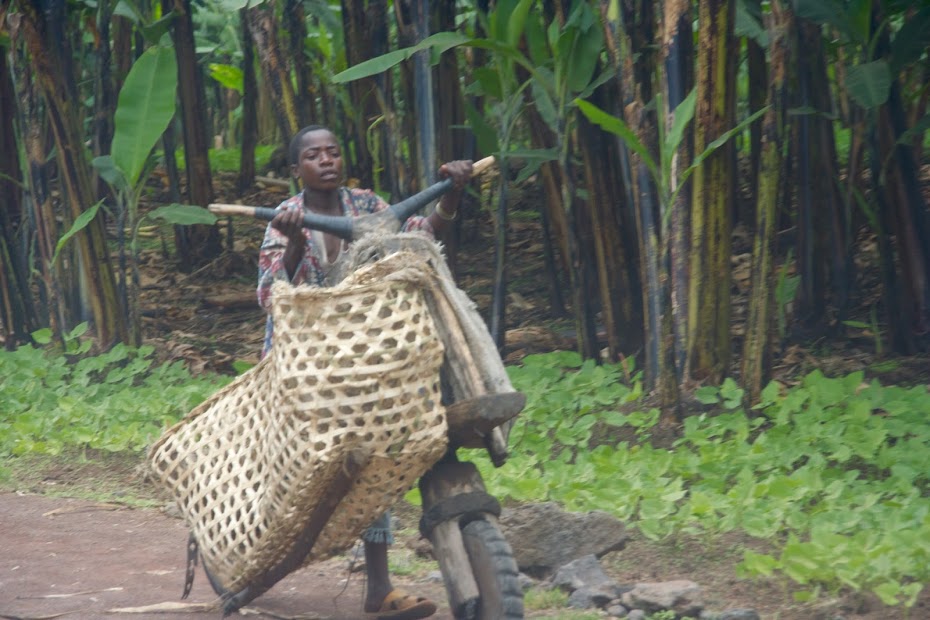
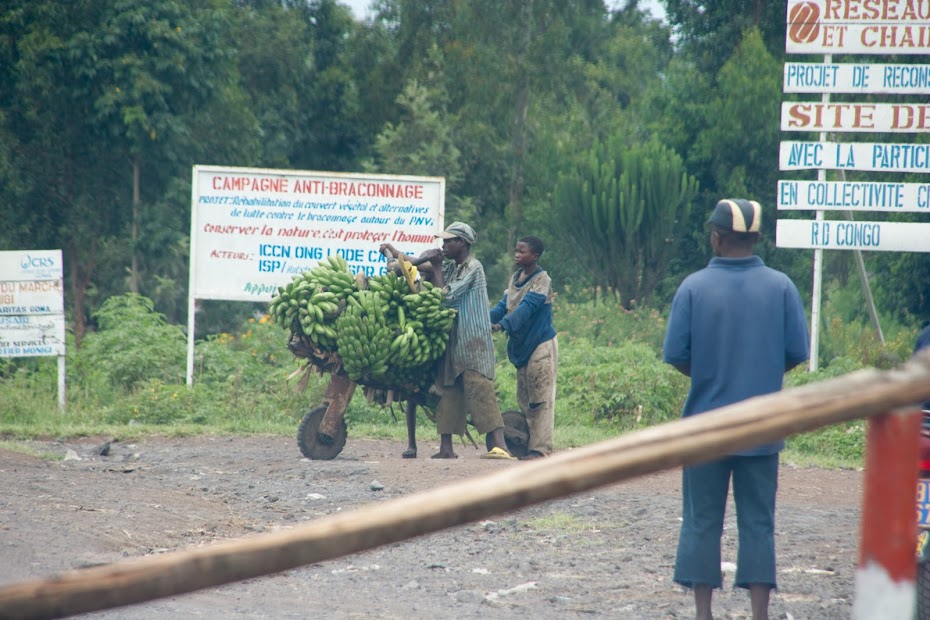
Back in the lodge on the Lake Kivu I went to the friendly receptionist to enquire about the safety of the road along the western shore of the lake heading down to Bukavu. She connected me on the phone via some high ranking UN officer in town, who told me that right not it should be OK during the day - but to hide my money and just keep enough out to pay my way out of the trouble should I get in one. I thought about it for a bit, but in my guts I knew I was done with this quite frankly a bit voyeuristic excursion into a ‘war zone’. Looking at the people who have been through a lot and clearly didn’t have much capacity for joy left in them wasn’t fun at all, and me ‘sightseeing’ the misery without being any help whatsoever felt just self indulgent. So ended my trip through Congo in Goma and decided to head next day to Rwanda across the border few km away.
Last night in Congo I got invited for a birthday dinner by a nice Belgian NGO worker and long time resident in one of the chalets in the compound. The dinner turned out to be highly cultured French affair with wine, delicious food, candles and the cream of the Goma’s NGO circuit in attendance. Fittingly, it reminded me of another scene from the Apocalypse Now, where Martin Sheen encounters in the middle of Vietnam jungle a family of French plantation owners, who argue fiercely over a dinner of finest French cuisine their determination to stand their ground or die, while the world as they knew it is quickly collapsing around them.
Unlike Martin Sheen, I didn’t end up in bed with a French lady - two souls lost in a jungle trying to lose themselves in each other and forget the impending doom. Badly outclassed, with my French limited to ‘merci’ and ‘bonjour’, somewhat sketchy table manners and deeply ingrained scepticism about western development help, I didn’t exactly fit in, so after dinner I excused myself and headed back to my chalet on my own.
Next morning I packed whatever I needed for a two day hike up and down Nyiragongo with a sleepover on top and left the rest with the bike in the lodge. The arranged taxi arrived and we drove about 15 km out of town on the same road I have arrived in from Uganda to the Nyiragongo park reception, where I was to start the hike. The reception was basically a house taken over by the families of park rangers - I”m sure unpaid for years, and I hooked up there with my guide for the trip - John. He said I will need two porters to carry my mattress, tent, sleeping bag, a food and water for two days, which seemed unnecessary as I used to hike in the mountains carrying my own stuff. But then seeing that I’m a very rare source of revenue for these families I didn’t push it, agreed to two porters who turned out to be father and a son and paid a total fee of about 120 USD.
Nyiragongo:

John, with obligatory gun. I kept wondering if it was and AK47 or indeed our own Czech vz.58 - I flunked out of the army service, so wasn't sure:

They packed my stuff into the white nylon bags used to store crops put them on their heads and we set-off. The hike wasn’t exactly a walk in the park - we had almost 2000 altitude meters to climb and by the time we set-off it was almost midday and hot.


The fissure at the side of the mountain, through which lava poured out in 2002 and destroyed part of Goma:


John and the porters (sorry, don't remember their names), taking break over the fissure:


We have made it to the rim of the crater at the top at about 4 pm. The view down the massive 2 km wide crater with lava lake 800 meters below the rim was very impressive for this volcano virgin.






With my initial curiosity satisfied, we set-up camp on the upwind side of the crater out of the poisonous sulphur fumes. With camp set-up I wanted to walk the crater circumference and if possible visit a crazy French volcanologist who lived somewhere on the other side of the crater monitoring volcanic activity and serving as an early warning system for Goma underneath, dodging occasional robbery attacks from whatever rebel movement was the flavour of the month and desperate enough to climb up desolate volcano for few pennies.
Leaving porters in the camp John and I went for the walk, but soon walked into the column of sickening sulphur killing anything alive on that side of the crater. We walked in it for a bit with John trailing me solemnly, but eventually I decided that we’ve been intoxicated enough and we turned back.





I was very surprised to find a group of 7-8 French men and women and their support team at our camp. They were a group of volcano enthusiasts (didn’t have a clue there are people like that) on their two week holiday in Africa fully dedicated to staring down a volcano or two. They’ve spent the first week in Tanzania sitting on top of a volcano called Oldoinyo Lengai, towering over Lake Natron on the eastern flank of much more famous (but completely inactive by now) Ngorongoro crater. For the second week they came here - to one of the most dodgy areas in the world to sit on top of another crater devoid of life breathing sulphur staring at red lava for next 4 days. They came ready with the camping chairs and Gucci gas masks. Some holiday… They were a nice bunch though, and gave me information about Oldoinyo Lengai which I never heard of before, but pencilled it down for possible visit later as I was heading into the area.

Back in camp I started to cook a dinner of smash and bangers and was quite dismayed to find out that my companions didn’t bring any food for themselves - contrary to what I was told when arranging the trip. Now I should have known better based on my experience in Simiens in Ethiopia, but got complacent when I was assured they will have food. I wasn’t pissed off because I had to provide the food, but because they didn’t tell me to and so I haven’t brought enough for the 4 of us - I brought just enough for me. We ended up all sharing the one meal I planned for myself and some biscuits.
After dinner I positioned myself at the top of the rim to try take some night pictures with my tragically slow lenses of the lava below. Like so:




In the morning, after a cold night at about 3,500 meters, we had a quick breakfast of few remaining biscuits, broke down the camp and set-off back down:
On the way down walking through a clearing where lava destroyed the forest:





Back at the park reception we were welcomed by the families of my companions, and - while waiting for my taxi to pick me up - chatted about life here. It wasn’t good is the least I can say. They weren’t paid by government for years and had to find ways to sustain their families. I assumed that the money I paid for the trip (not just the tip I gave them on return) will end up in their pockets. And who can blame them - I didn’t. On top of that they used to get attacked regularly by different gangs of ‘rebels’ and armies passing through the area - John’s mother and brother were killed by the Rwandan army during their punitive excursion into Congo against the exiled Hutus. This was properly depressing stuff.
Images taken while waiting for the taxi and on the taxi ride back to Goma:








Back in the lodge on the Lake Kivu I went to the friendly receptionist to enquire about the safety of the road along the western shore of the lake heading down to Bukavu. She connected me on the phone via some high ranking UN officer in town, who told me that right not it should be OK during the day - but to hide my money and just keep enough out to pay my way out of the trouble should I get in one. I thought about it for a bit, but in my guts I knew I was done with this quite frankly a bit voyeuristic excursion into a ‘war zone’. Looking at the people who have been through a lot and clearly didn’t have much capacity for joy left in them wasn’t fun at all, and me ‘sightseeing’ the misery without being any help whatsoever felt just self indulgent. So ended my trip through Congo in Goma and decided to head next day to Rwanda across the border few km away.
Last night in Congo I got invited for a birthday dinner by a nice Belgian NGO worker and long time resident in one of the chalets in the compound. The dinner turned out to be highly cultured French affair with wine, delicious food, candles and the cream of the Goma’s NGO circuit in attendance. Fittingly, it reminded me of another scene from the Apocalypse Now, where Martin Sheen encounters in the middle of Vietnam jungle a family of French plantation owners, who argue fiercely over a dinner of finest French cuisine their determination to stand their ground or die, while the world as they knew it is quickly collapsing around them.
Unlike Martin Sheen, I didn’t end up in bed with a French lady - two souls lost in a jungle trying to lose themselves in each other and forget the impending doom. Badly outclassed, with my French limited to ‘merci’ and ‘bonjour’, somewhat sketchy table manners and deeply ingrained scepticism about western development help, I didn’t exactly fit in, so after dinner I excused myself and headed back to my chalet on my own.
XTJoe
Race Dog
Thanks for sharing- ditto
Thank you for comments.
Ian, glad you like the new AT - I will have a look once it is here, but most probably stick with the Ten for the time being - until (if) the new one is on the way. The AT seems just too heavy for my usage - I do not need 1000 cc bike.
Ian, glad you like the new AT - I will have a look once it is here, but most probably stick with the Ten for the time being - until (if) the new one is on the way. The AT seems just too heavy for my usage - I do not need 1000 cc bike.
XT JOE said:Thanks for sharing- ditto
Thank you Joe, glad you enjoy the report.
rrichardson86
Race Dog
- Joined
- Dec 28, 2009
- Messages
- 1,013
- Reaction score
- 0
- Bike
- BMW R80GS
This has to go on the Roll of Honour! Brilliant!
Rwanda
Rwanda is a small rural African country, that most people didn’t even know existed, until 1994 when it sadly became a byword for a mass genocide. Triggered by the death of then president who’s airplane got shot down supposedly by Tutsi rebels (but possibly set-up by rival faction in the government), majority Hutu population prompted by their leaders turned on their Tutsi neighbours and within 4 months between April and July 1994 massacred up to 1 million of Tutsis and moderate Hutus. This wasn’t an industrial cold efficient affair perfected by totalitarian regimes in Europe, but messy gruesome one with fanaticized ordinary people eagerly taking part in the killings using rudimentary agricultural implements. The genocide was eventually stopped by the Tutsi rebel movement RPF, which defeated the government forces and took over the country. In the aftermath millions of Hutus run into the neighbouring Congo fearing reprisals from the new government - which did follow them across the border contributing to the civil war in that country.
While I do not generally share the western guilt about everything that goes wrong in Africa and this horrific act was primarily internal Rwandan affair, I think the world represented in Rwanda by the impotent UN peacekeepers did fuck-up big time and many people could have been saved if UN leadership have shown some courage. I understand that Americans have just burned their fingers in Somalia and weren’t interested in another African adventure, while UN was heavily involved in the war in Yugoslavia. But there seems to have been a solution available (and I think I read somewhere that UN honcho Kofi Annan did consider it at the time) - using private mercenary company such as South African Executive Outcomes to put out the fire quickly. Executive Outcomes have done exactly that successfully in Angola and Sierra Leone for a fraction of the costs of any UN deployment, and with zero political risks stemming from possible casualties - they are just disposable dogs of war at the end of the day in most people's opinion. Instead UN leadership decided to keep supposedly high moral ground and avoid using the mercenaries. Which most probably resulted in avoidable death of hundreds of thousands of people - not the first or last time that empty morality costed many people's lives.
When I arrived, 10 years after the genocide, the western media were portraying Rwanda as a country that has been through hell, then catharsis and is fast on the mend. I didn’t see it that way. Most predominantly Hutu people seemed stunted and withdrawn - there seemed to be palpable poisonous undercurrent of guilt and defeat just waiting to get out. Given half a chance I felt they would be back at it again in the blink of an eye. There are many people - including some of the former RPF fighters criticizing the current government, and I’m sure they are no saints. However, it seemed to me that possible alternatives were much worse and strong government was reasonable price to pay to prevent another catastrophe.
My route through Rwanda:
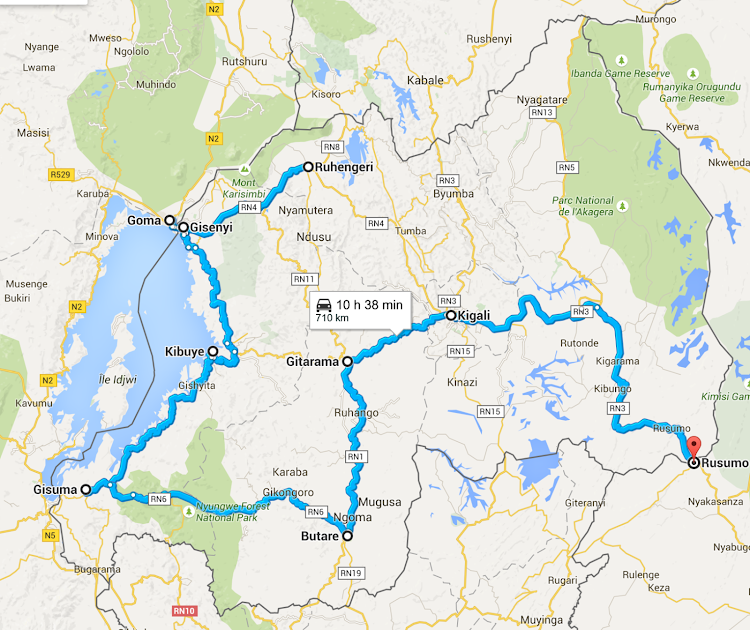
I crossed the border in Gisenyi, which is basically extension of Goma on the other side of the border. On the border I got accosted by a local guy with horrific scar across half of his neck - somebody clearly tried to cut off his head with machete and got only half way through, how he survived that is beyond me. He was friendly, spoke English (Rwanda, apart from local languages of course, is part of the former francophone Africa) and helped me through the procedures - I didn’t dare to ask about the scar.
From Gisenyi I headed on good widing tar east to Ruhengeri sitting on the southern side of Ruwenzori mountains. Ruhengeri is the place in Rwanda to visit gorillas. I found accommodation in a local guesthouse and started to ask around about the gorilla trek. Many people warned me that the treks are booked months ahead and there is no way to just rock-up and go - which didn’t dissuade me to do exactly that, I hate booking anything ahead. People in the guesthouse didn’t know if there are any spaces left, and told me the best would be for me to try arrange the trek next morning at the park headquarters about 20 km out of town.
Next morning I followed another car with tourists heading for the trek to the park headquarters, where they said no problem, I paid my admission fee of 370 USD, was allocated to a group of 4 other tourists waiting for the trek and got introduction of the gorilla family we are going to visit (there are multiple families and each is visited every day only by one group of tourists and the visits are limited to one hour). We were assigned English speaking guide and a very professionally looking military support group with clean fatigues and more importantly clean well maintained AKs. They kept their distance and didn’t want us to take the pictures of them - their presence felt reassuring as there were 8 tourists killed on gorilla trek on the Ugandan side by Congolese rebels few years back. There were trackers since early morning up the mountains looking for the gorilla family - the gorillas are habituated to human presence, but they migrate every night, so park sends a forward party every morning to track them down and direct tourists to the apes. Occasionally they fail and the tourists will miss the gorillas.
We drove few more km and debussed at the local school playground to start the trek checking the mountains above us. The Rwenzori mountains are impressive chain of 6 or 7 volcanoes towering over 4500 meters high. Their higher reaches are overgrown by dense rainforest, the lower reaches are heavily populated and the forest was cleared for tea plantations, sadly encroaching on the gorillas habitat.
At the park headquarters:
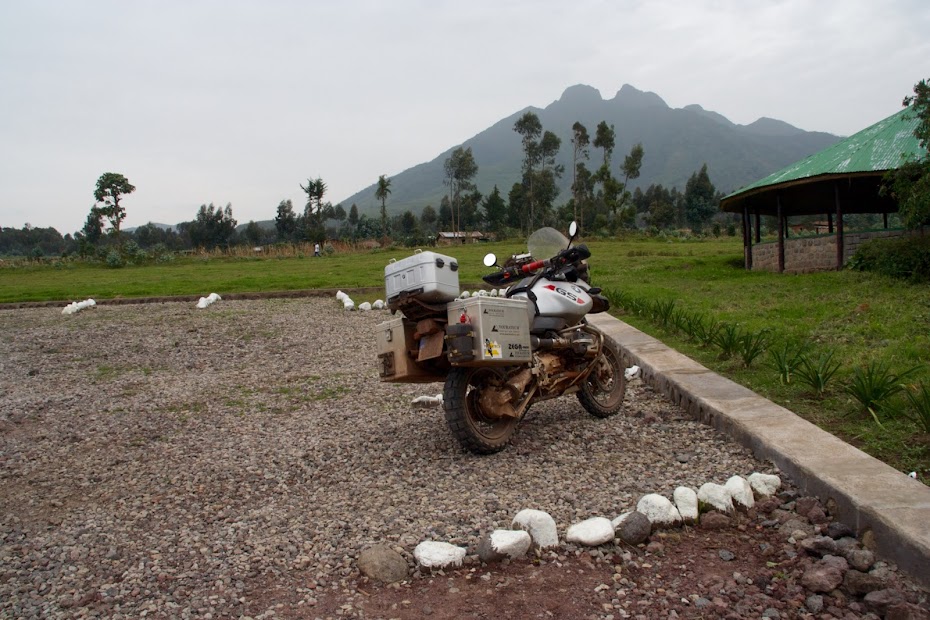
The schoolyard - star of the hike:


The lower reaches of the forest have lots of bamboo - gorillas love bamboo shoots as they keep them slightly intoxicated:
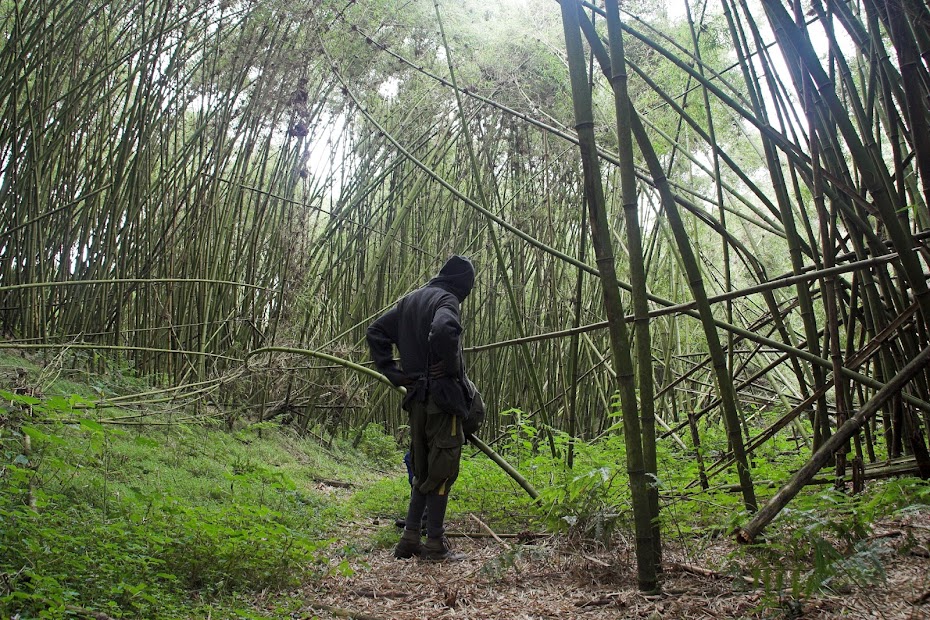
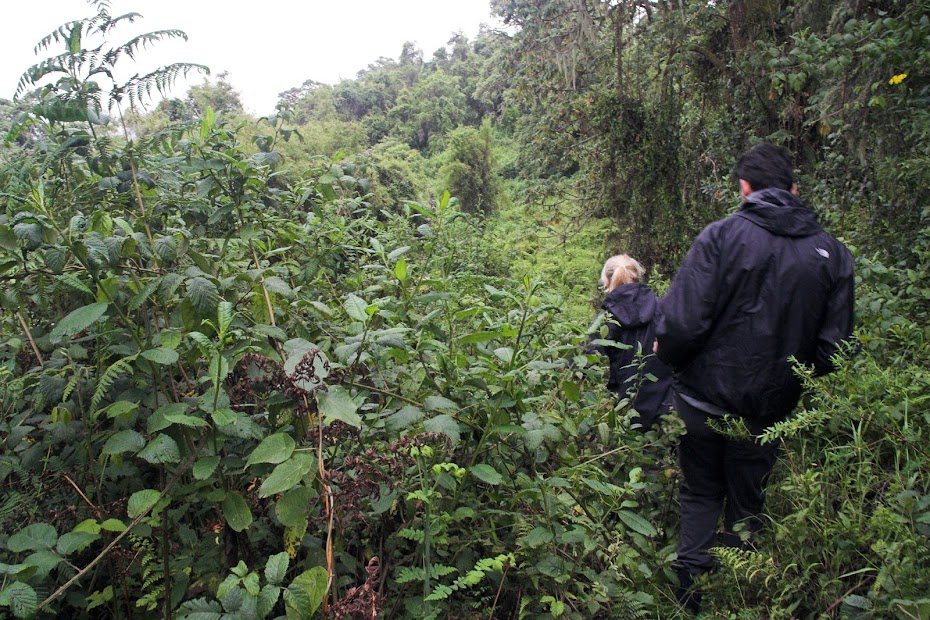
Once you reach the slope of volcano the going gets really steep:
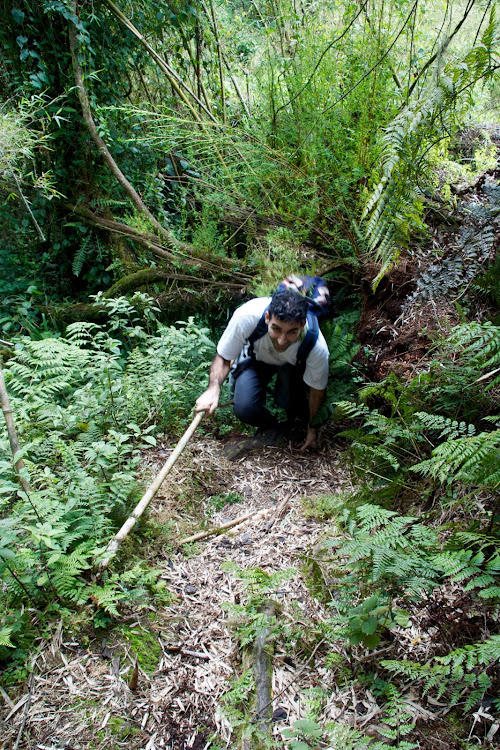
And then there they were . I have seen most of the african animals in the wild - including great white sharks and saltwater crocodiles, but nothing - and I mean nothing - matches meeting gorillas in the wild. It’s probably cliche to say that they look like long lost forest tribe, but they do. It’s just eerie feeling to be completely exposed in the midst of a group of animals that can take your head off with one blow while they just go quietly about their business unperturbed by the bunch of neurotic hairless apes in their midst trying to keep their little anxieties in check. And there is something very humbling when they look you in the eye without any trace of aggression or nervosity, just curiosity.
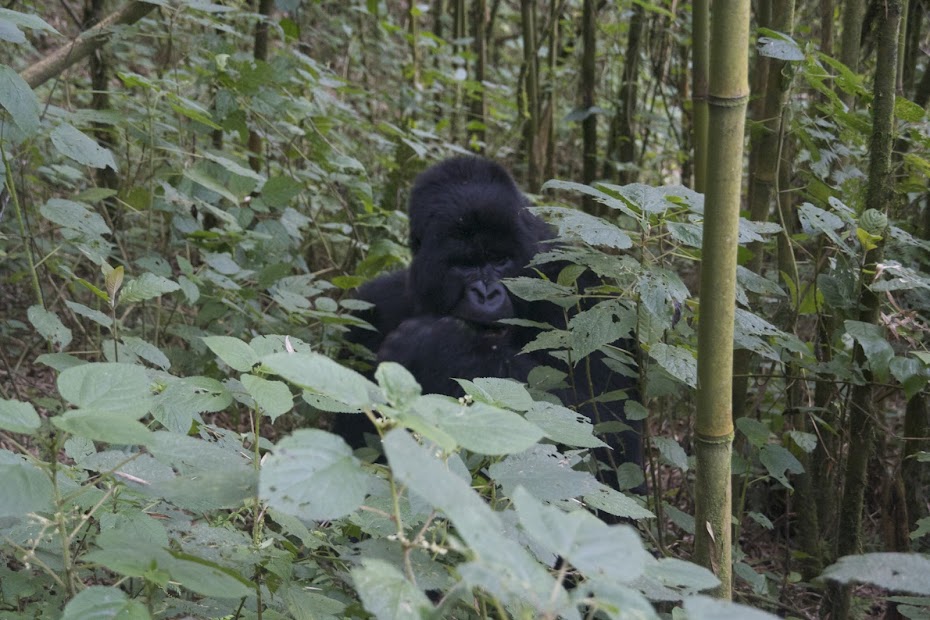
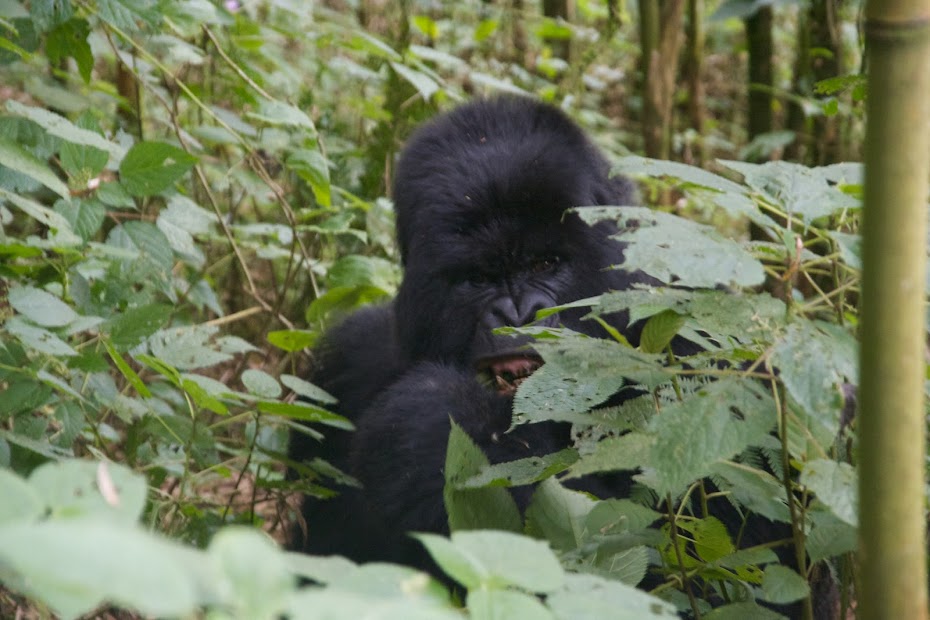
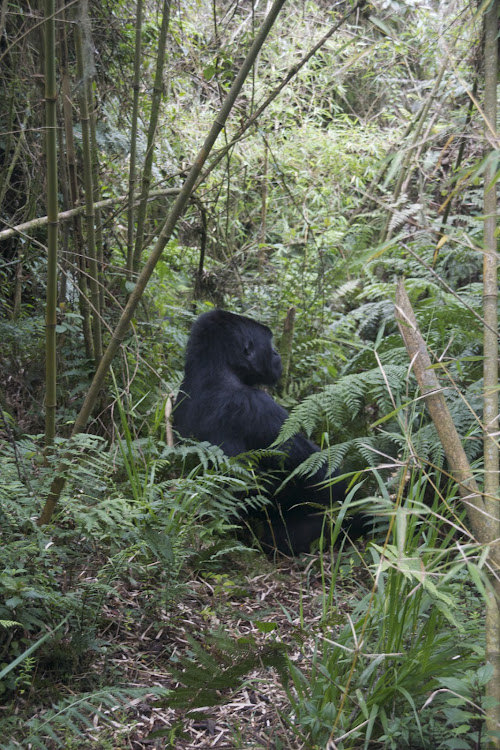
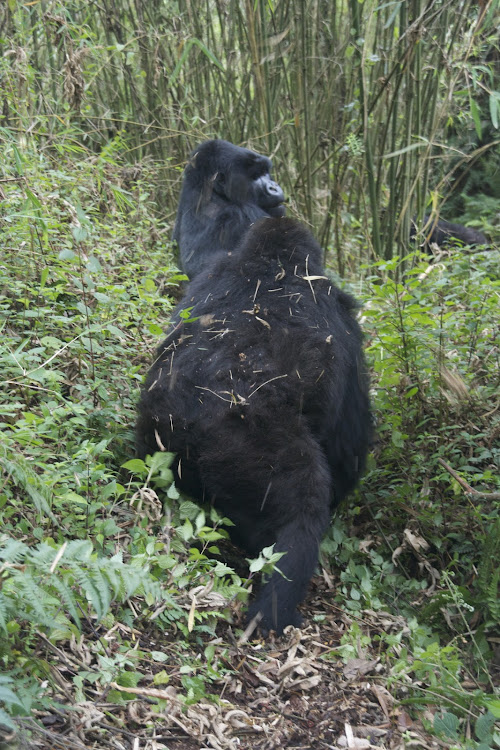
Mother with a baby:
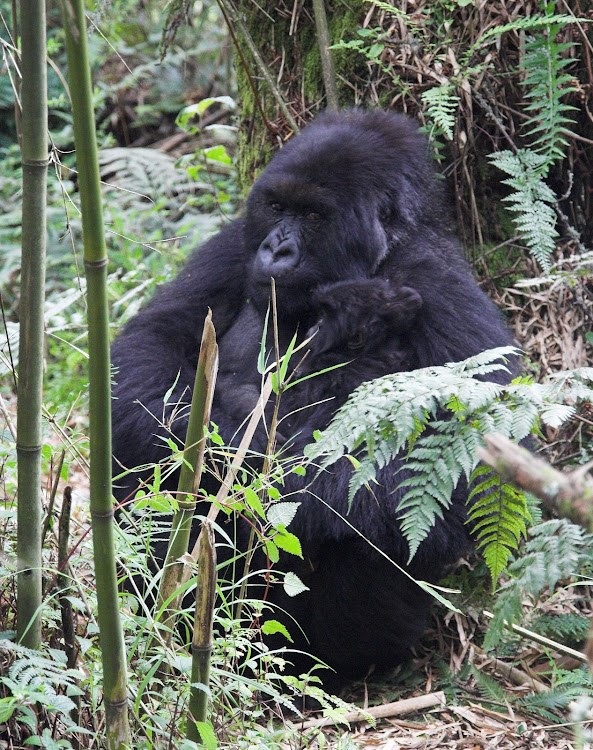

This one seemed to be the group's intellectual:
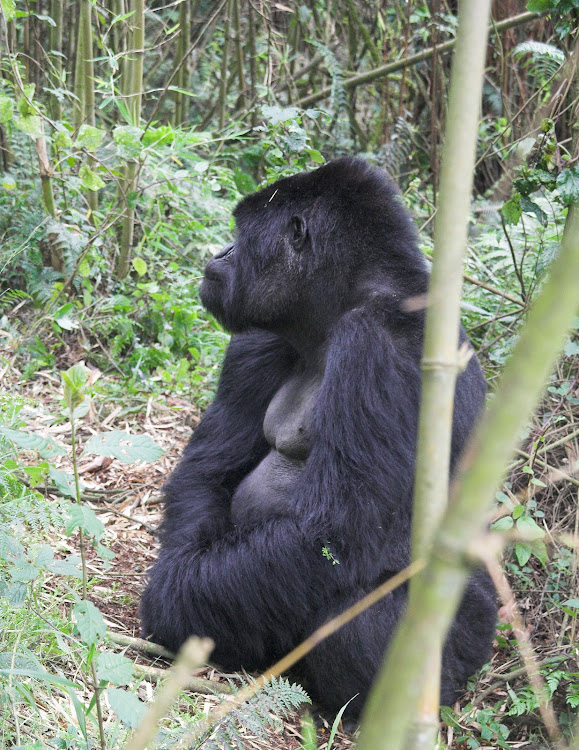
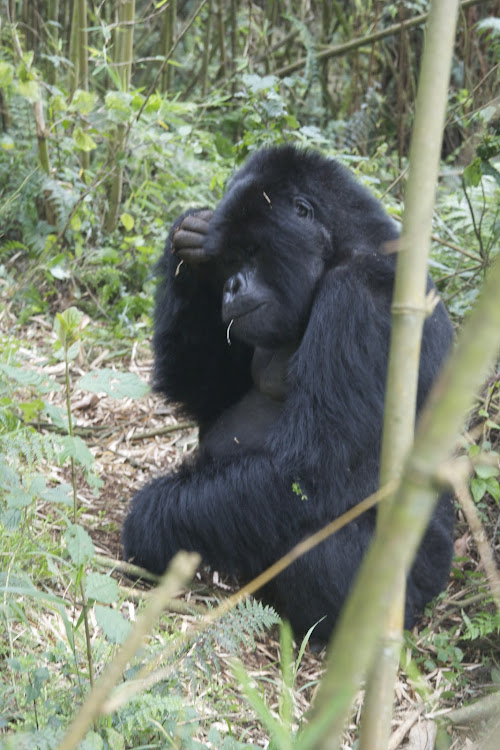
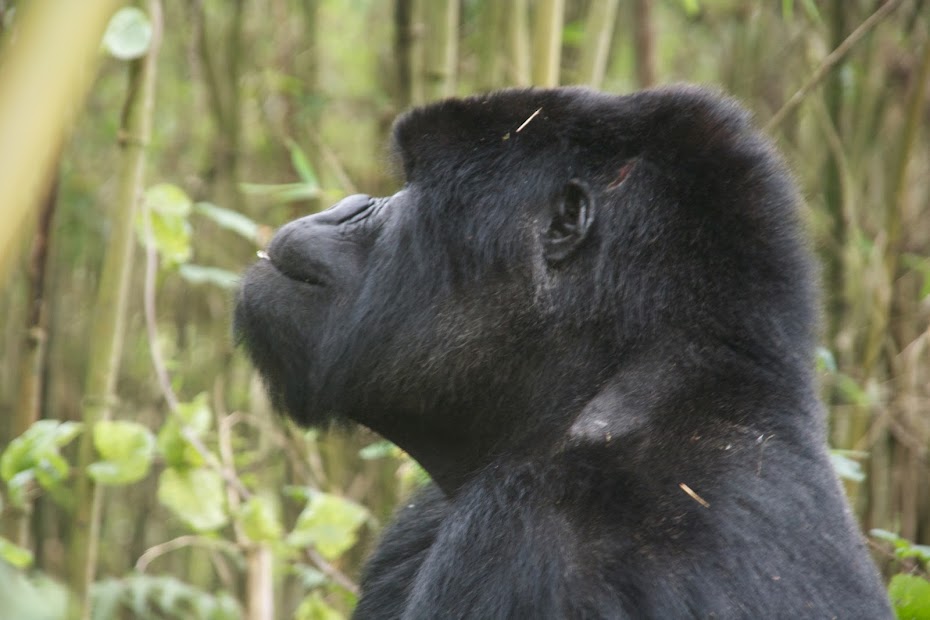
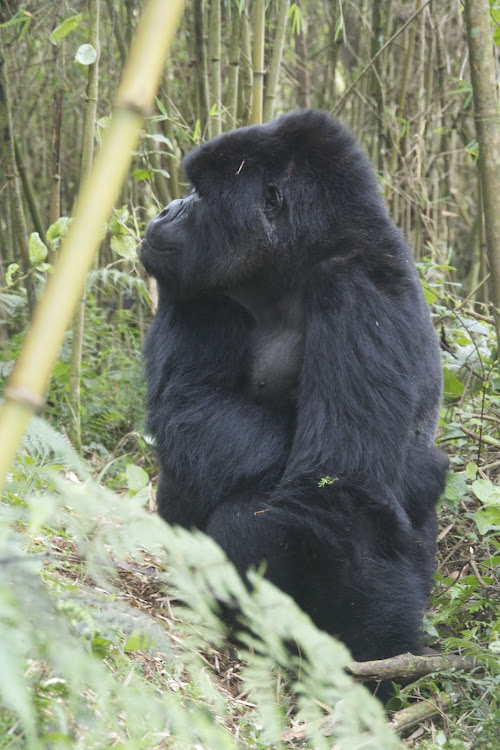

The males - youngster and the dominant silverback, who most of the time kept away from us:
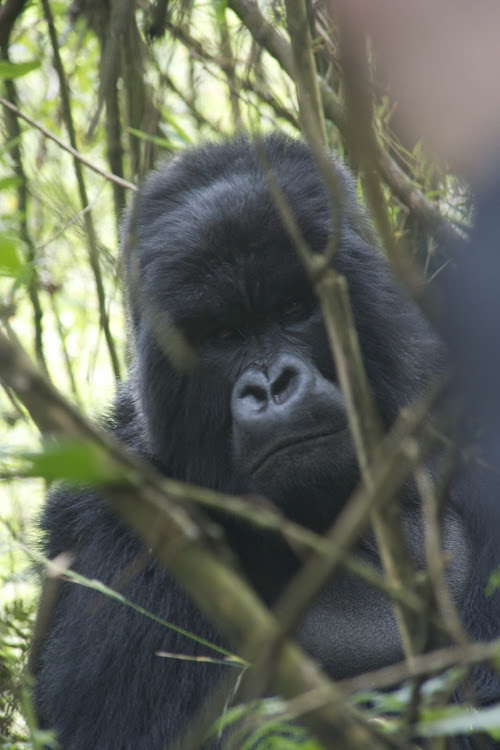
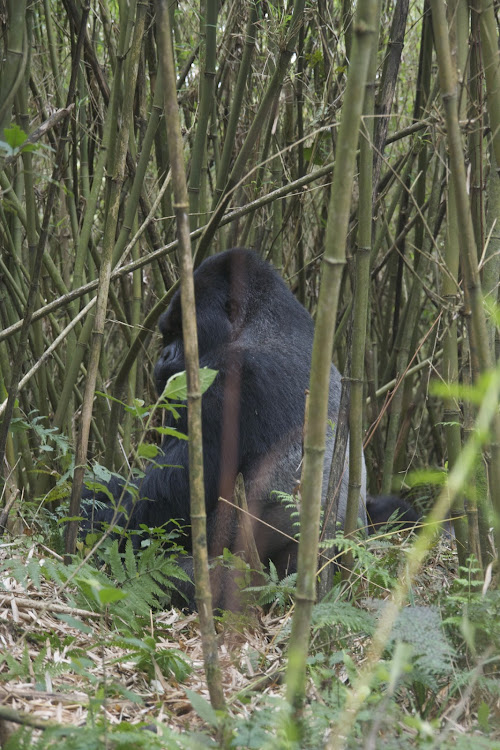
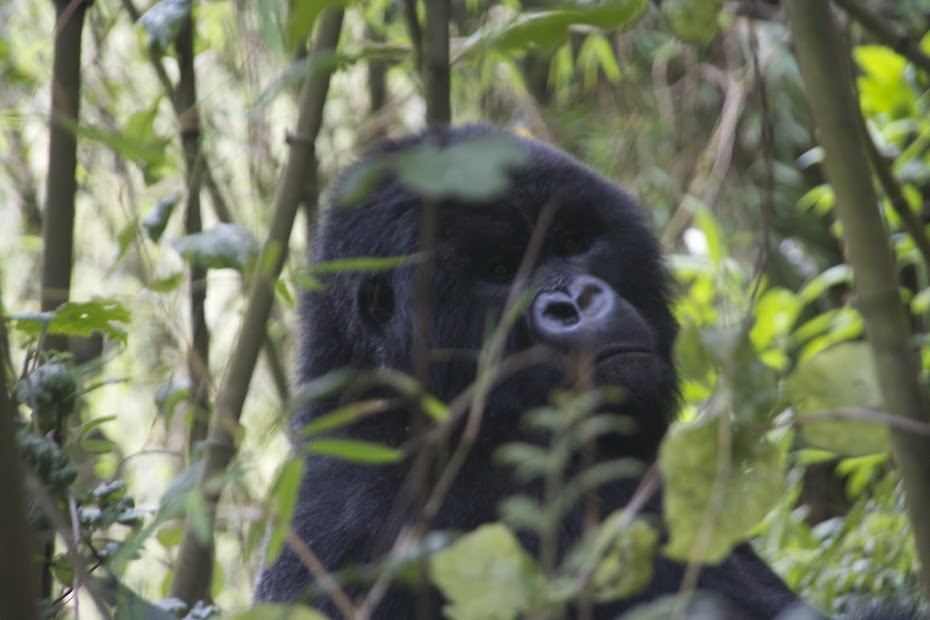
Mischievous youngsters - a bit of a problem as they tried to touch us and we were told to avoid any contact so that they do not catch our ugly diseases. We ended up back-pedalling a bit from the little ones:
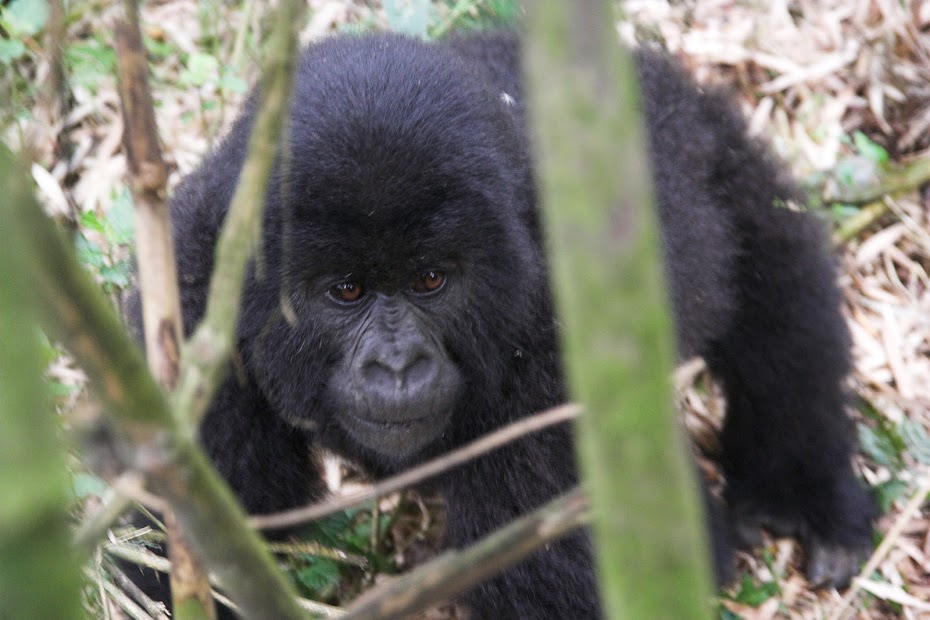
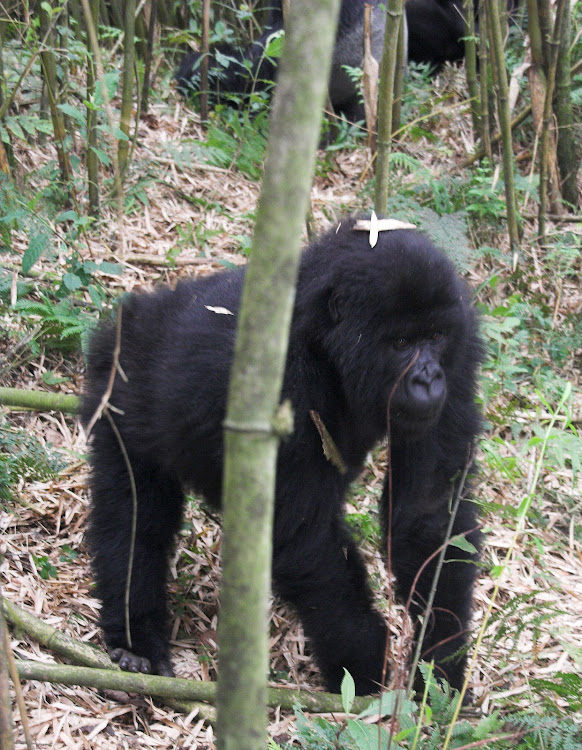
About half way into our visit I almost screwed-up big time - I was busy taking pictures of the young male lazily showing off about 3 meters from us, when unbeknownst to me the silverback (dominant male) crept to about meter and half of me and started pissed off growl and aggressive display - telling the youngster to cut it off or something. Taken completely by surprise by the sight of 200 kgs of pissed of meat within an arm's reach, my immediate instinct was to run. Now in the induction we were told that whatever we do, we should never run as it will trigger the hunter’s instinct in the animals and they will give a chase, which of course we are going to lose. We were supposed to stand our ground and if shit hits the fan, bow down in a display of submission. Now that is nice and dandy if you at least have a clue that it’s about to hit off, but I didn’t and taken by surprise my instincts took over. Luckily, the guide has seen it coming and pinned me down to the ground (I was crouching to get picture and he was standing behind me) with all his weight hissing through his teeth “Stay where you are!”. Which I did and everything returned back to normal as soon as the silverback felt satisfied that the young jock got the message.
The young jock showing-off - just yawning, not threatening:
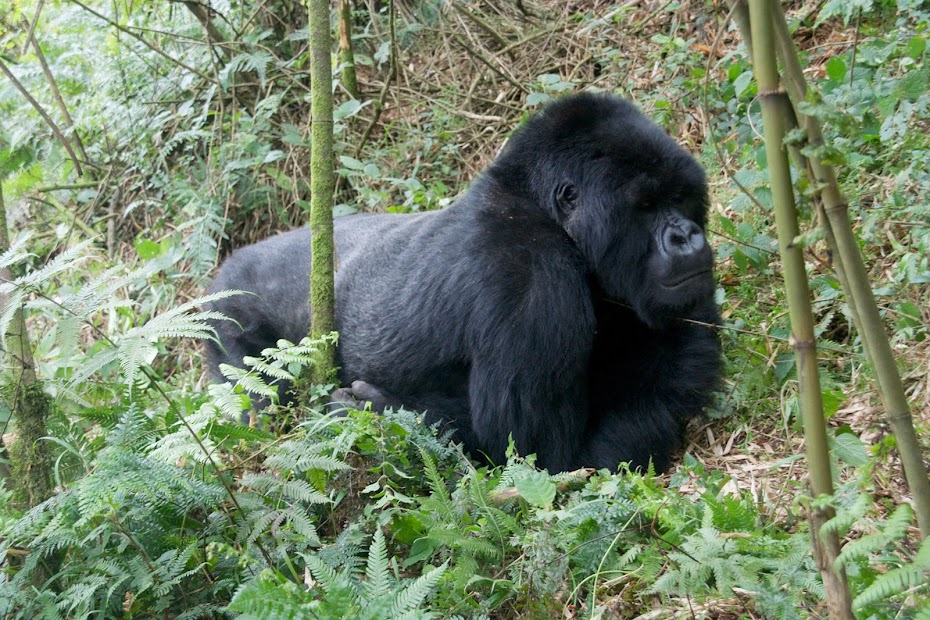
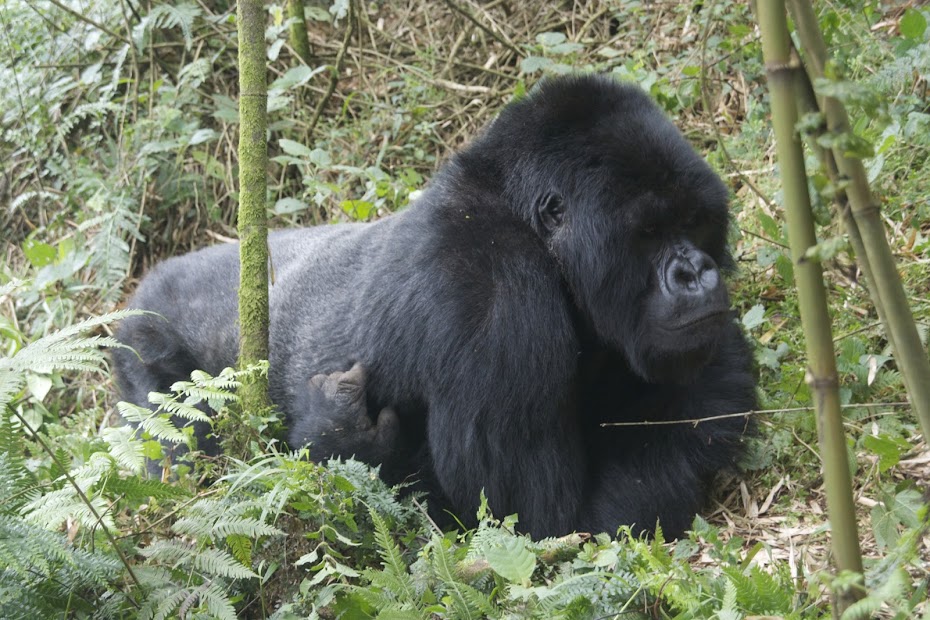
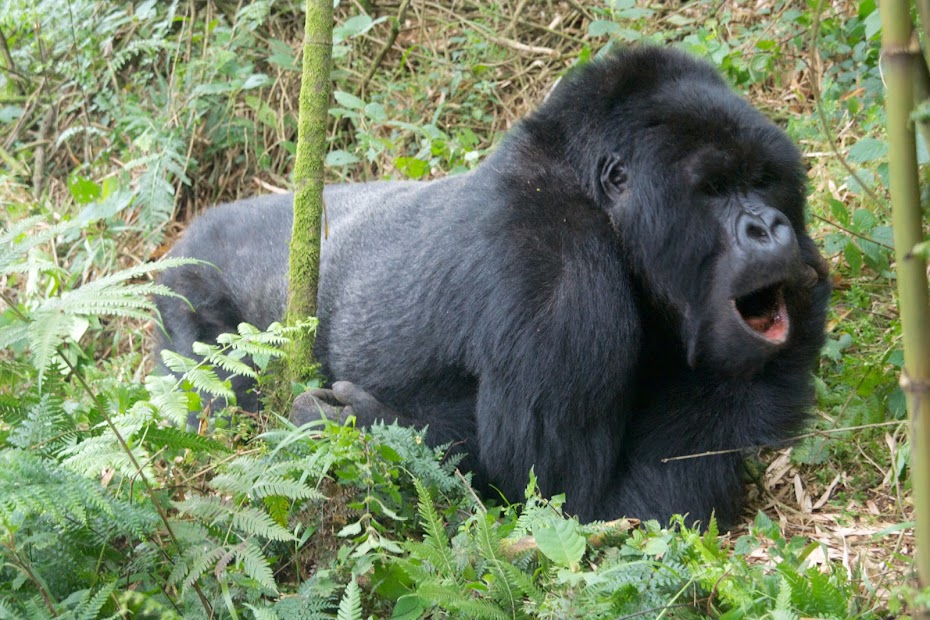
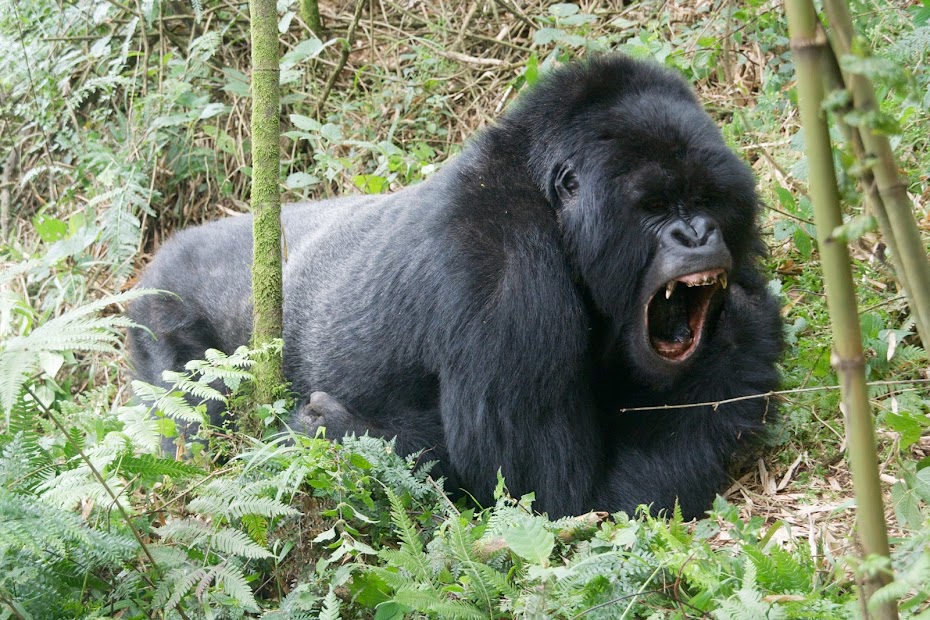
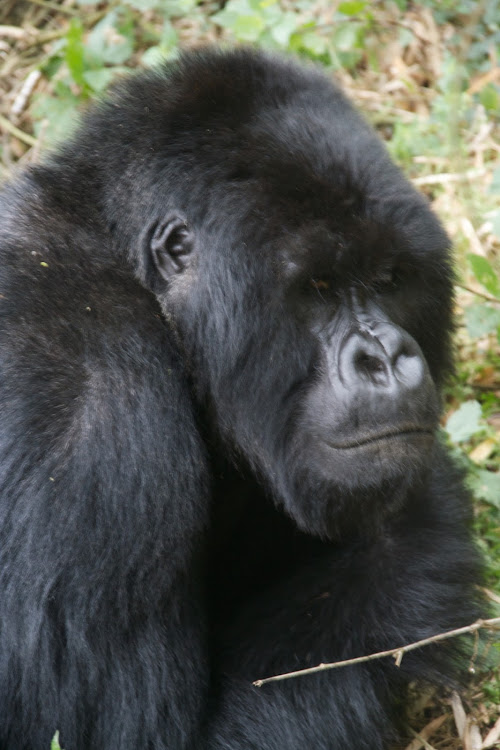
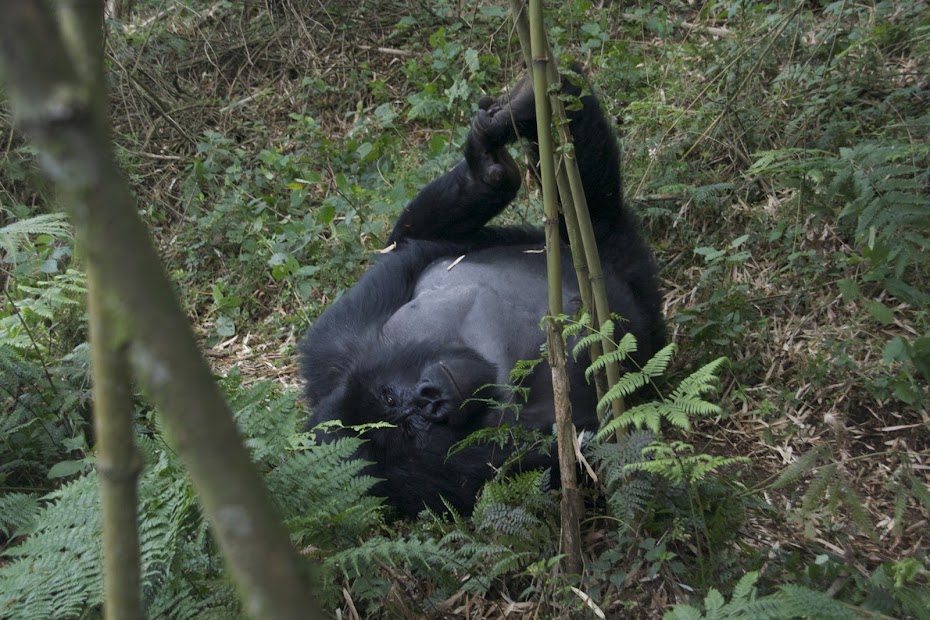

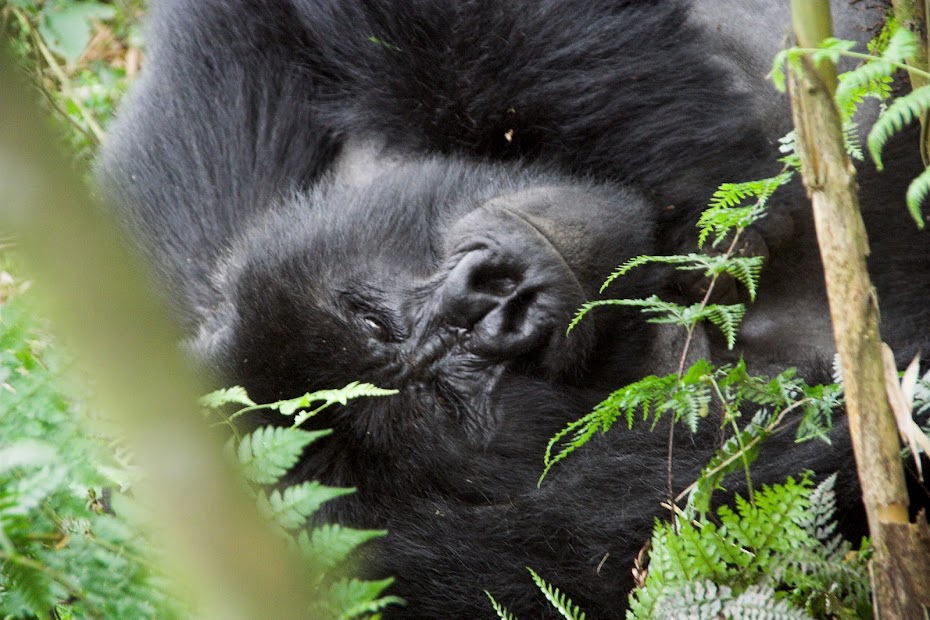
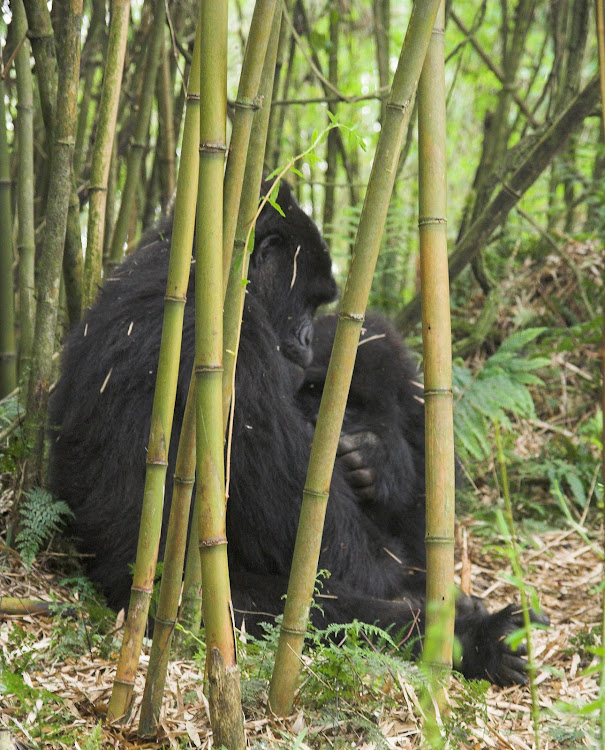
And the boss:
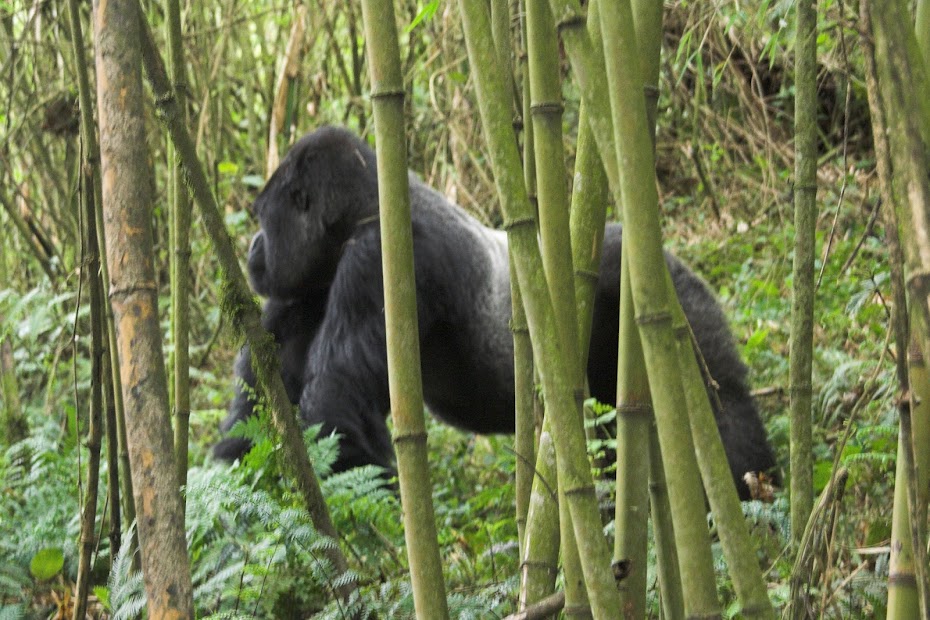
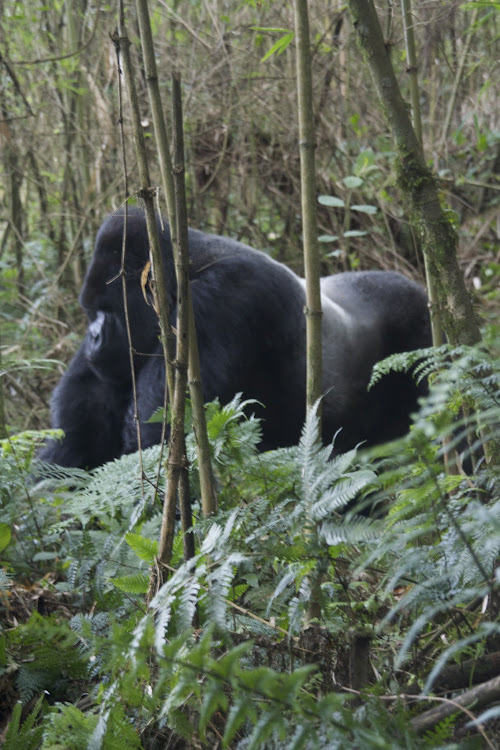
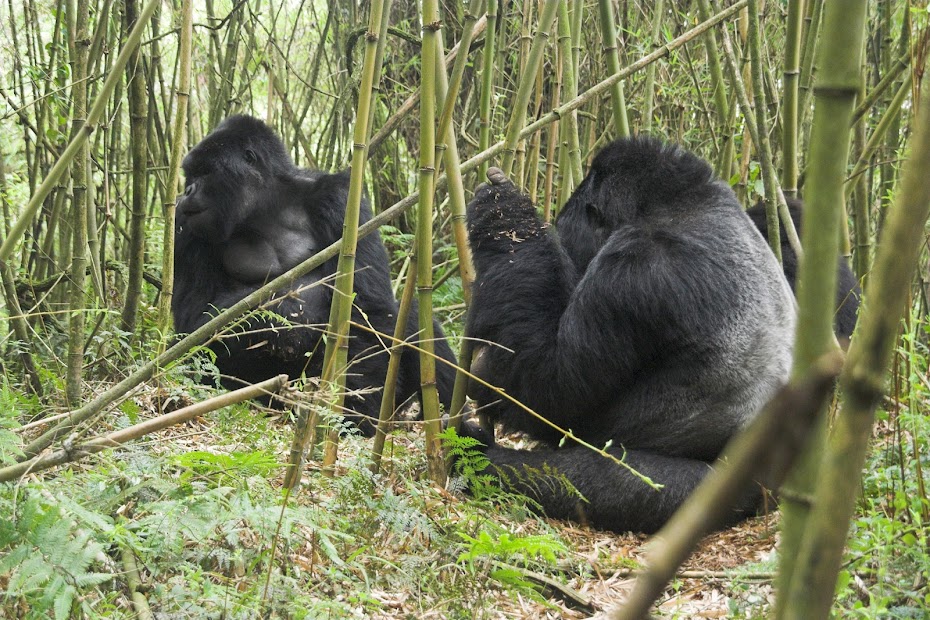

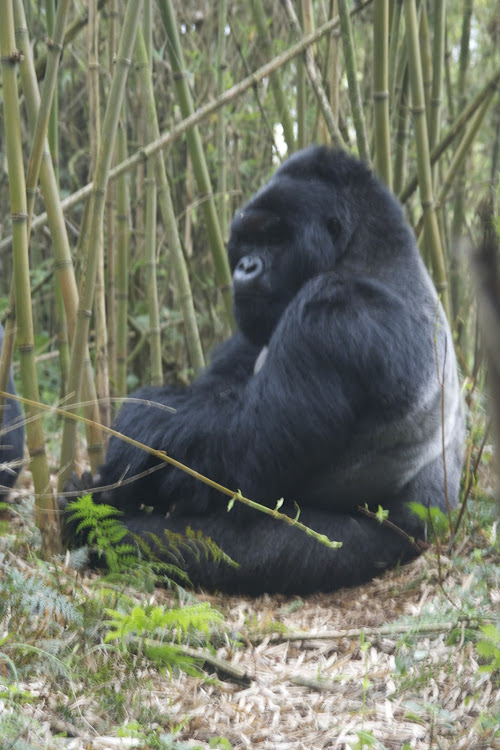
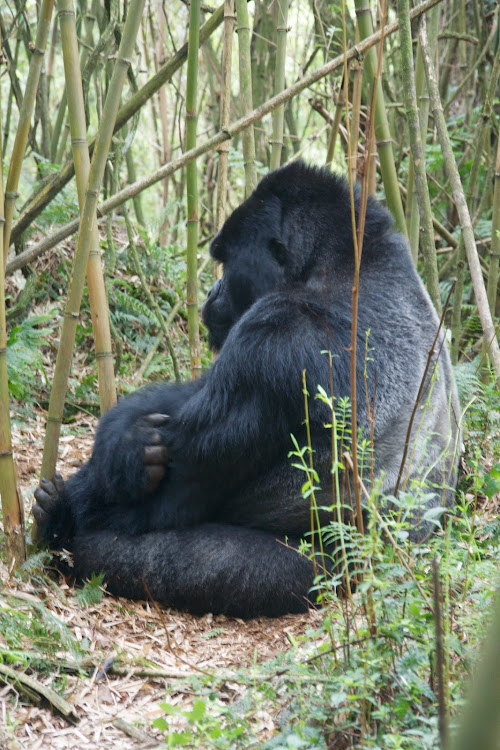
Funnily enough, exactly an hour after we found them and our allocated time slot expired, the gorillas all stood up as one man and moved off - not unlike most other 9 to 5 employees I know.

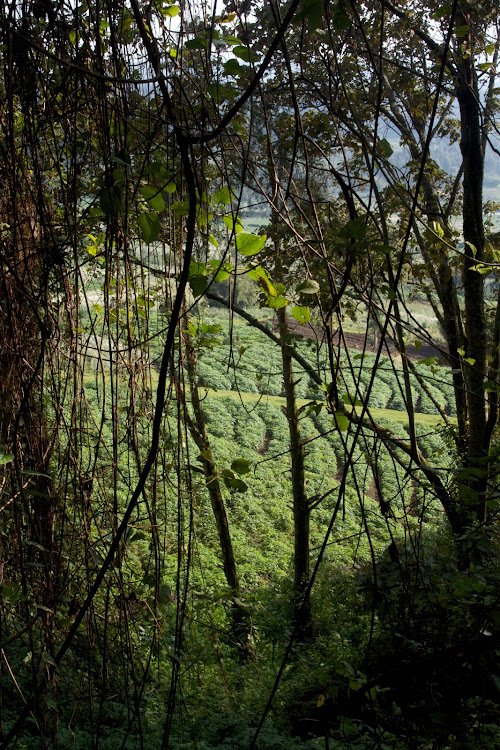
Rwanda is a small rural African country, that most people didn’t even know existed, until 1994 when it sadly became a byword for a mass genocide. Triggered by the death of then president who’s airplane got shot down supposedly by Tutsi rebels (but possibly set-up by rival faction in the government), majority Hutu population prompted by their leaders turned on their Tutsi neighbours and within 4 months between April and July 1994 massacred up to 1 million of Tutsis and moderate Hutus. This wasn’t an industrial cold efficient affair perfected by totalitarian regimes in Europe, but messy gruesome one with fanaticized ordinary people eagerly taking part in the killings using rudimentary agricultural implements. The genocide was eventually stopped by the Tutsi rebel movement RPF, which defeated the government forces and took over the country. In the aftermath millions of Hutus run into the neighbouring Congo fearing reprisals from the new government - which did follow them across the border contributing to the civil war in that country.
While I do not generally share the western guilt about everything that goes wrong in Africa and this horrific act was primarily internal Rwandan affair, I think the world represented in Rwanda by the impotent UN peacekeepers did fuck-up big time and many people could have been saved if UN leadership have shown some courage. I understand that Americans have just burned their fingers in Somalia and weren’t interested in another African adventure, while UN was heavily involved in the war in Yugoslavia. But there seems to have been a solution available (and I think I read somewhere that UN honcho Kofi Annan did consider it at the time) - using private mercenary company such as South African Executive Outcomes to put out the fire quickly. Executive Outcomes have done exactly that successfully in Angola and Sierra Leone for a fraction of the costs of any UN deployment, and with zero political risks stemming from possible casualties - they are just disposable dogs of war at the end of the day in most people's opinion. Instead UN leadership decided to keep supposedly high moral ground and avoid using the mercenaries. Which most probably resulted in avoidable death of hundreds of thousands of people - not the first or last time that empty morality costed many people's lives.
When I arrived, 10 years after the genocide, the western media were portraying Rwanda as a country that has been through hell, then catharsis and is fast on the mend. I didn’t see it that way. Most predominantly Hutu people seemed stunted and withdrawn - there seemed to be palpable poisonous undercurrent of guilt and defeat just waiting to get out. Given half a chance I felt they would be back at it again in the blink of an eye. There are many people - including some of the former RPF fighters criticizing the current government, and I’m sure they are no saints. However, it seemed to me that possible alternatives were much worse and strong government was reasonable price to pay to prevent another catastrophe.
My route through Rwanda:

I crossed the border in Gisenyi, which is basically extension of Goma on the other side of the border. On the border I got accosted by a local guy with horrific scar across half of his neck - somebody clearly tried to cut off his head with machete and got only half way through, how he survived that is beyond me. He was friendly, spoke English (Rwanda, apart from local languages of course, is part of the former francophone Africa) and helped me through the procedures - I didn’t dare to ask about the scar.
From Gisenyi I headed on good widing tar east to Ruhengeri sitting on the southern side of Ruwenzori mountains. Ruhengeri is the place in Rwanda to visit gorillas. I found accommodation in a local guesthouse and started to ask around about the gorilla trek. Many people warned me that the treks are booked months ahead and there is no way to just rock-up and go - which didn’t dissuade me to do exactly that, I hate booking anything ahead. People in the guesthouse didn’t know if there are any spaces left, and told me the best would be for me to try arrange the trek next morning at the park headquarters about 20 km out of town.
Next morning I followed another car with tourists heading for the trek to the park headquarters, where they said no problem, I paid my admission fee of 370 USD, was allocated to a group of 4 other tourists waiting for the trek and got introduction of the gorilla family we are going to visit (there are multiple families and each is visited every day only by one group of tourists and the visits are limited to one hour). We were assigned English speaking guide and a very professionally looking military support group with clean fatigues and more importantly clean well maintained AKs. They kept their distance and didn’t want us to take the pictures of them - their presence felt reassuring as there were 8 tourists killed on gorilla trek on the Ugandan side by Congolese rebels few years back. There were trackers since early morning up the mountains looking for the gorilla family - the gorillas are habituated to human presence, but they migrate every night, so park sends a forward party every morning to track them down and direct tourists to the apes. Occasionally they fail and the tourists will miss the gorillas.
We drove few more km and debussed at the local school playground to start the trek checking the mountains above us. The Rwenzori mountains are impressive chain of 6 or 7 volcanoes towering over 4500 meters high. Their higher reaches are overgrown by dense rainforest, the lower reaches are heavily populated and the forest was cleared for tea plantations, sadly encroaching on the gorillas habitat.
At the park headquarters:

The schoolyard - star of the hike:


The lower reaches of the forest have lots of bamboo - gorillas love bamboo shoots as they keep them slightly intoxicated:


Once you reach the slope of volcano the going gets really steep:

And then there they were . I have seen most of the african animals in the wild - including great white sharks and saltwater crocodiles, but nothing - and I mean nothing - matches meeting gorillas in the wild. It’s probably cliche to say that they look like long lost forest tribe, but they do. It’s just eerie feeling to be completely exposed in the midst of a group of animals that can take your head off with one blow while they just go quietly about their business unperturbed by the bunch of neurotic hairless apes in their midst trying to keep their little anxieties in check. And there is something very humbling when they look you in the eye without any trace of aggression or nervosity, just curiosity.




Mother with a baby:


This one seemed to be the group's intellectual:





The males - youngster and the dominant silverback, who most of the time kept away from us:



Mischievous youngsters - a bit of a problem as they tried to touch us and we were told to avoid any contact so that they do not catch our ugly diseases. We ended up back-pedalling a bit from the little ones:


About half way into our visit I almost screwed-up big time - I was busy taking pictures of the young male lazily showing off about 3 meters from us, when unbeknownst to me the silverback (dominant male) crept to about meter and half of me and started pissed off growl and aggressive display - telling the youngster to cut it off or something. Taken completely by surprise by the sight of 200 kgs of pissed of meat within an arm's reach, my immediate instinct was to run. Now in the induction we were told that whatever we do, we should never run as it will trigger the hunter’s instinct in the animals and they will give a chase, which of course we are going to lose. We were supposed to stand our ground and if shit hits the fan, bow down in a display of submission. Now that is nice and dandy if you at least have a clue that it’s about to hit off, but I didn’t and taken by surprise my instincts took over. Luckily, the guide has seen it coming and pinned me down to the ground (I was crouching to get picture and he was standing behind me) with all his weight hissing through his teeth “Stay where you are!”. Which I did and everything returned back to normal as soon as the silverback felt satisfied that the young jock got the message.
The young jock showing-off - just yawning, not threatening:









And the boss:






Funnily enough, exactly an hour after we found them and our allocated time slot expired, the gorillas all stood up as one man and moved off - not unlike most other 9 to 5 employees I know.


Rwanda - part 2
Next day I went for another hike up one of the volcanoes (not tracking gorillas this time), this time with a Russian dude and Slovenian girl, who were in Africa on some kind of charity or study gig. They have travelled all the way from Malawi and then decided that gorillas were too expensive so they are not going to see them - now, they are expensive, but if you already paid all the money to get there it seemed silly to me not to go and see them. Funnily we have actually bumped into a gorilla family, but were pushed on by our guides as we didn’t pay for the privilege.
Pics from the hike:
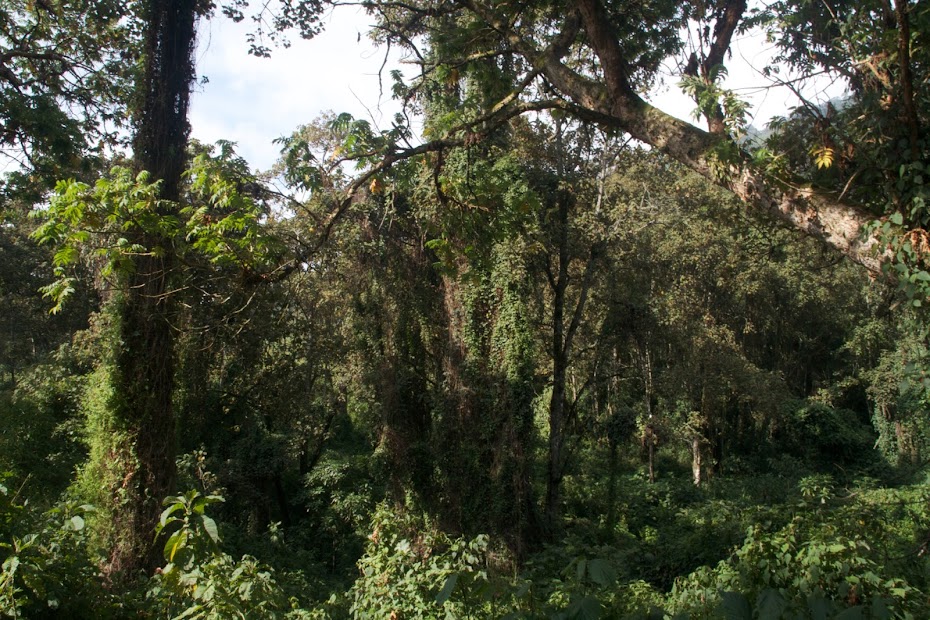
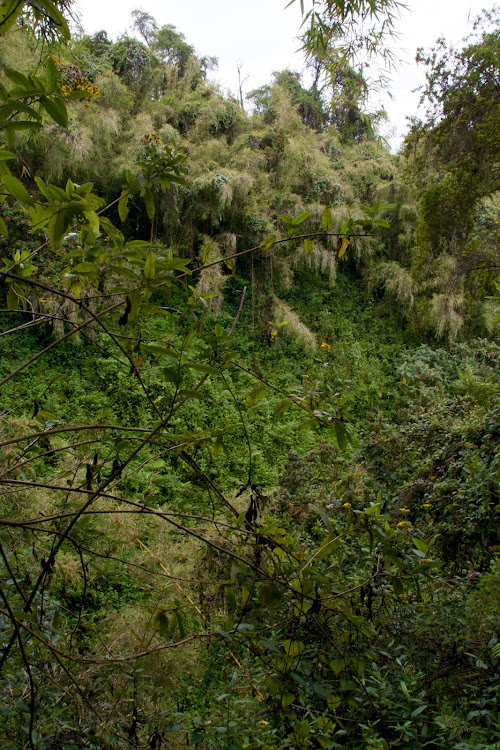
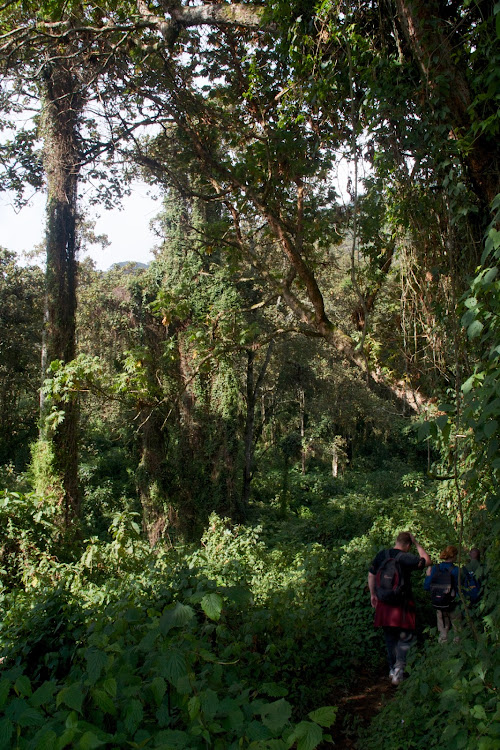
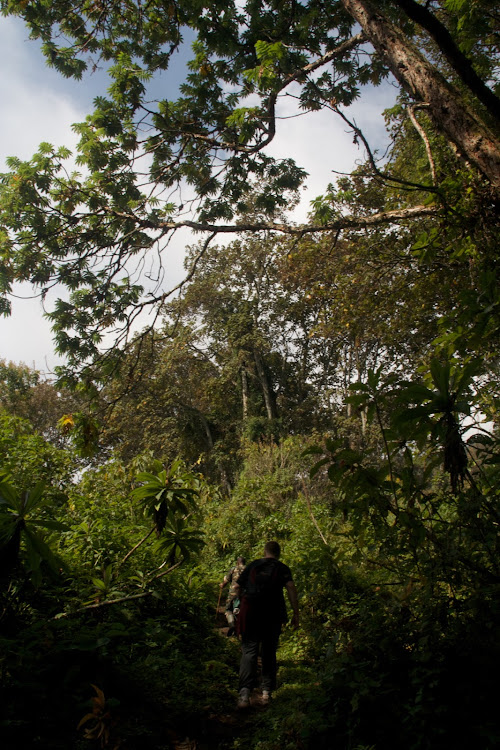
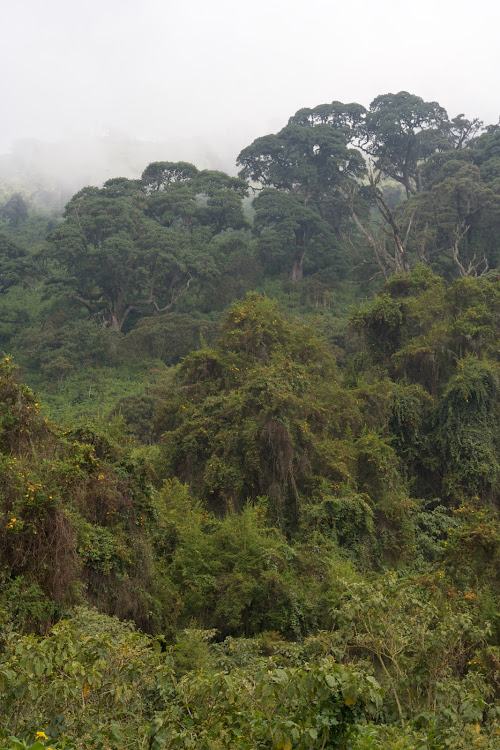
Sneaky one of our machine gun support barely visible in his fatigues:
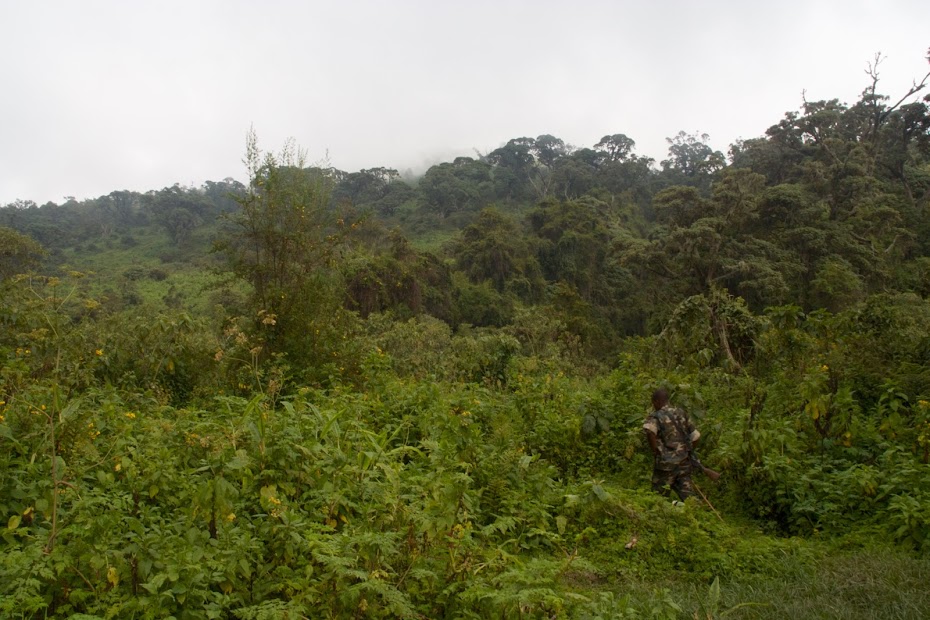
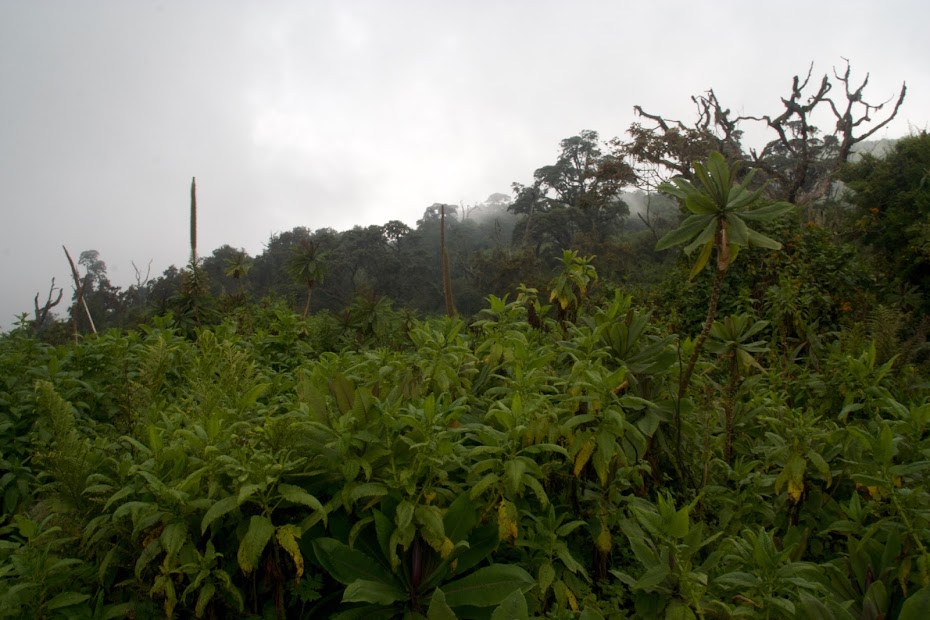

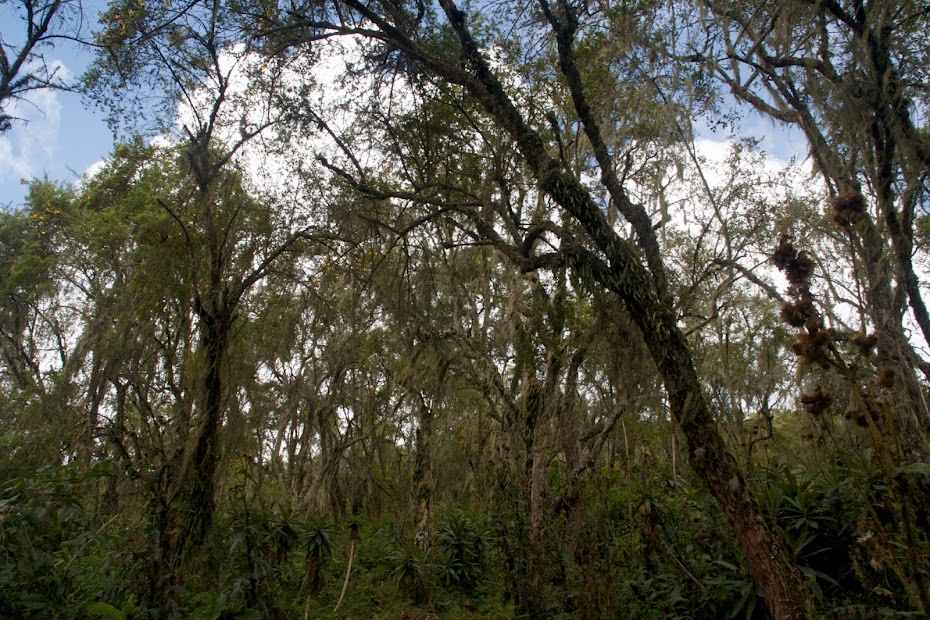
And the crater lake at the top at about 4500 meters:
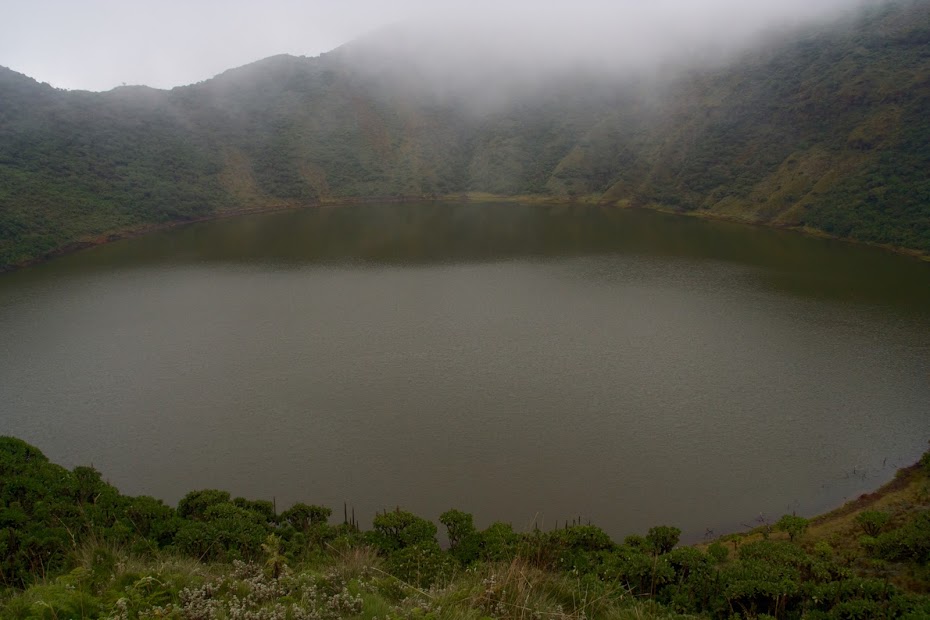
And the way down through the rainforest:
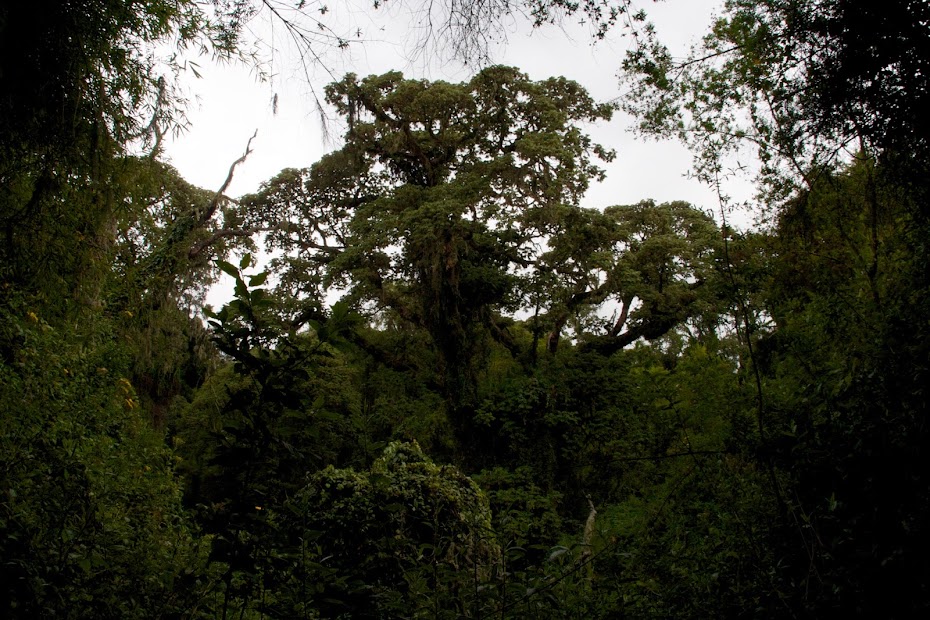
And the tea plantations encroaching on the forest higher up:
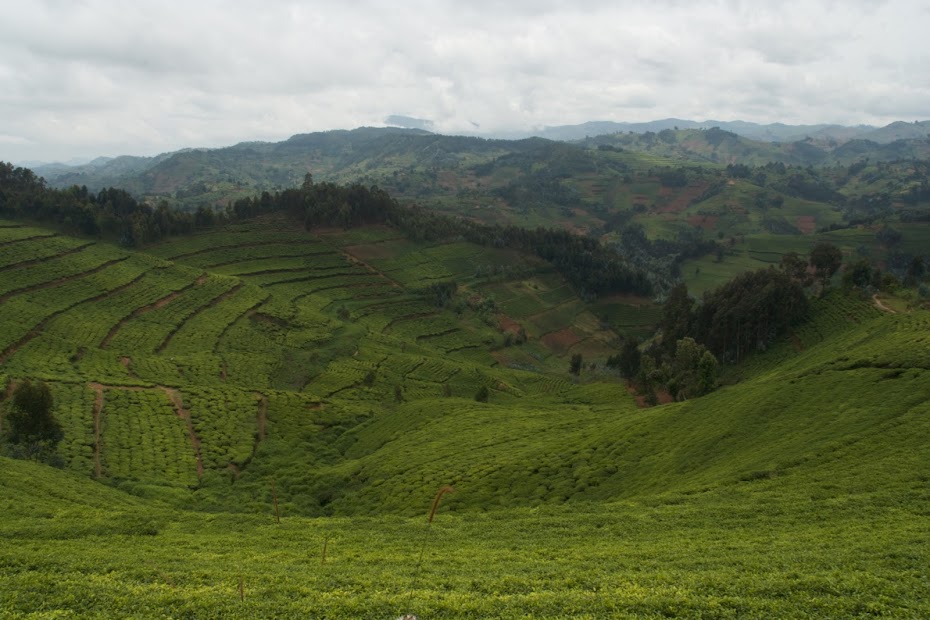
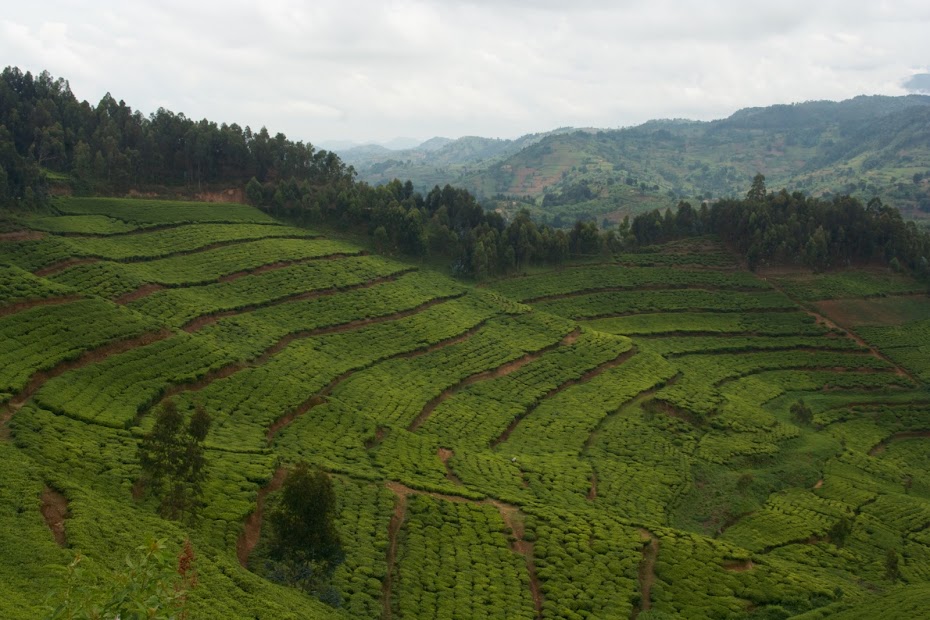

With the main attraction - gorillas, safely stored on the memory cards, I headed back west to explore a bit more of Rwanda in a roundabout trip. I retraced back to Gisenyi and took a dirt road following the eastern shore of the Lake Kivu south to Kibuye. The dirt road snaked over the sea of typical green hills - the reason why Rwanda is called a country of thousand hills, along the eastern shore of the lake providing beautiful vistas. While this is pretty remote area, I could see that overpopulation is a problem here as there was no forest left and almost every piece of land was covered by the terrace fields.
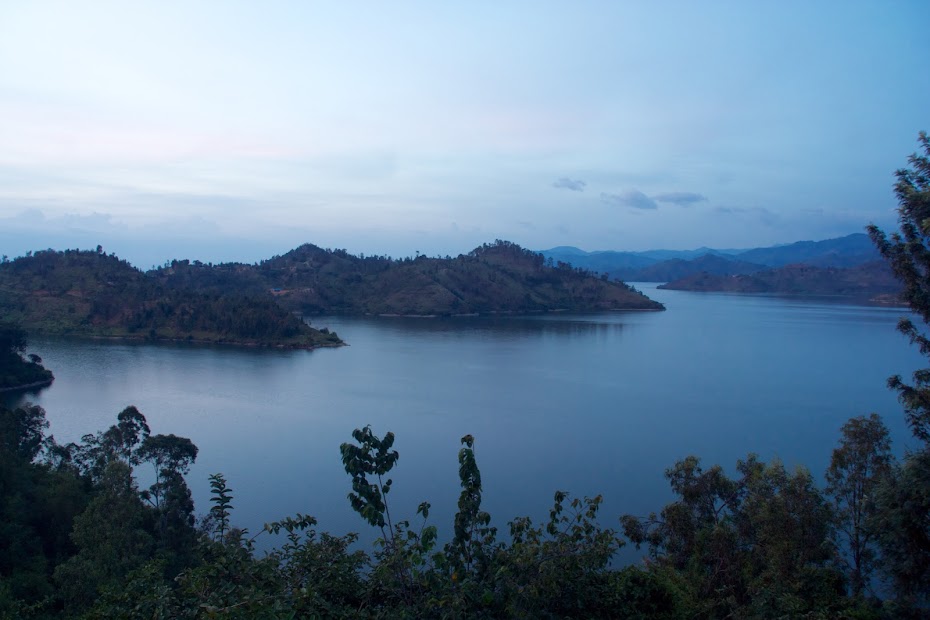
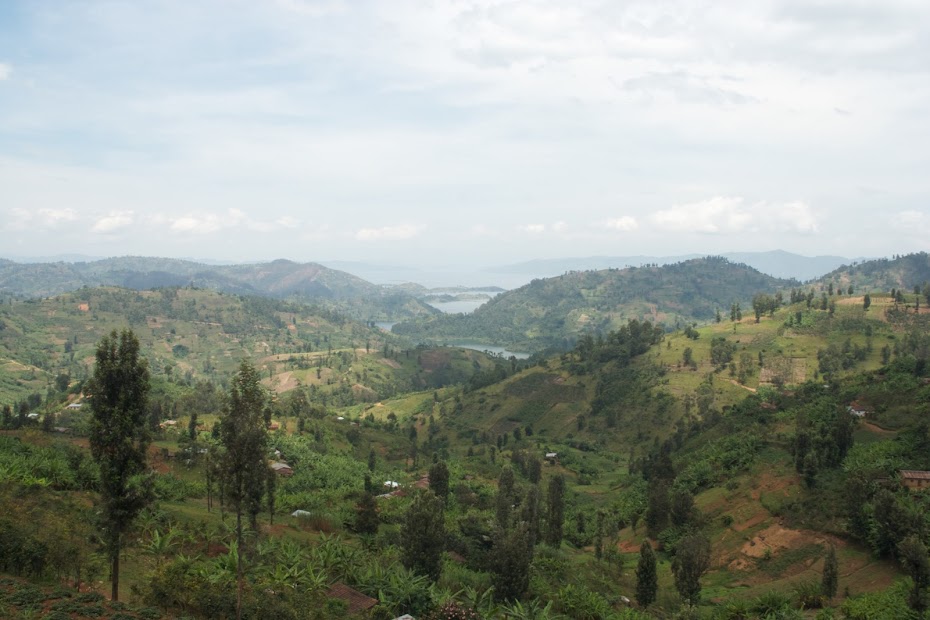
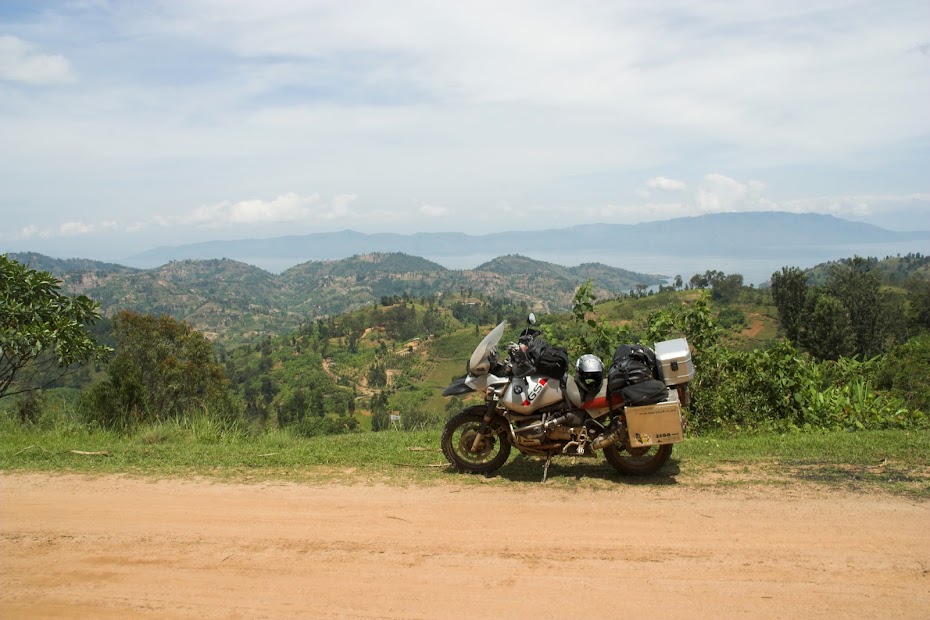

Kibuye turned out to be a lovely little town perched on a hill above the lake. And sadly, as any other major settlement in Rwanda, was a site of one of the worst massacres during the genocide, when people who took a refuge in picturesque catholic church up on a hill were handed over the the priests to the wild crowd outside and massacred. You wouldn’t know it by looking at the place - I happened to find an accommodation in the old monastery/cloister adjacent to the church, and marvelled at the tranquility of the place. Until I found about its history, that is. There is a little museum there documenting the genocide - I didn’t go for a visit there or in any of the multitude of other genocide museums dotted across Rwanda. I knew enough about what has happened, and could almost sense in the air why, so I didn’t see a point at gawking at the pictures or even human remains of this horror. I find the modern visual fascination with death too voyeuristic, selfish and insensitive to the victims.
I went for a late lunch to the restaurant at the shore of the lake, where I’ve spotted a whitey approaching across the lake on a canoe. It turned out to be Chris from the Wadi Haifa gang - he hooked up with some expat who lived in a house on the shore of the lake and borrowed his canoe for a little trip. Over a bottle of beer or three we caught up on our travels - Chris has done gorillas trek in Congo and then managed hitchhike his way all the way to Goma, where he took a boat across lake Kivu to Bukavu at the southern tip of the lake - the place I wanted to go originally when I planned to circumvent Kivu on the congolese side. He got into massive problems there as the local honchos told him that his visa was valid only for North Kivu province and he was now in the South Kivu illegally. He managed to get out of that predicament somehow - probably paying some fake fine or something, jumped across the border to Rwanda and hitchhiked/public transported his way up to Kibuye. Well, it was probably a good thing then that I didn’t go to Bukavu. Somehow, I have lost al the pictures from Kibuye, sorry.
Next day I continued on the dirt track south all the way to Gisuma at the southern tip of the lake where I hit tar and turned east towards Nyungwe Forest NP, another place to go see chimpanzees, which is what I wanted to do. On the tar I have come across one of the most bizarre manifestation of the European guilt - the Germans, decided that the best way to heal Rwandan scars is to provide their police with a fleet of BMW GS1150s. When I first met one going in the opposite direction on otherwise empty road, I thought I’m hallucinating - and the same seemed to be true about the policeman. Later on in Kigali I found a compound that was supposedly servicing the bikes - and about half of the fleet was already there in different stages of disrepair. But it was all good and provided for a nice ice breaker at the police checkpoints all over Rwanda.
Once in the park I found accommodation in one of the chalets at the headquarters and went for a hike with an American couple, who worked in Peace Corps in Kigali. The forest was impressive, but we haven’t met any chimps - except once the guide pointed up to the canopy about 20-30 meter above saying there is a chimp there. We all strained our necks and did that “Oh, yeah!” sound, but we’ve seen bugger all. the highlight of the trek came when we were going through a dense undergrowth and out of a blue the rangers tensed noticeably and indicated to us to keep quiet. There were poacher in the vicinity and they were going to try to arrest them. I imagined hardened rebels armed up to their teeth prowling around and felt distinctly exposed in the group - I’m the opposite of the herd animal, when the shit hits the fan my instinct is to go on my own as far as possible from any group. Well, the poachers turned out to be 4 local motherly ladies getting some wood in the forest which is prohibited. They had to follow us up to the ranger station where after a little talking to they were released.
Nyungwe Forest NP:
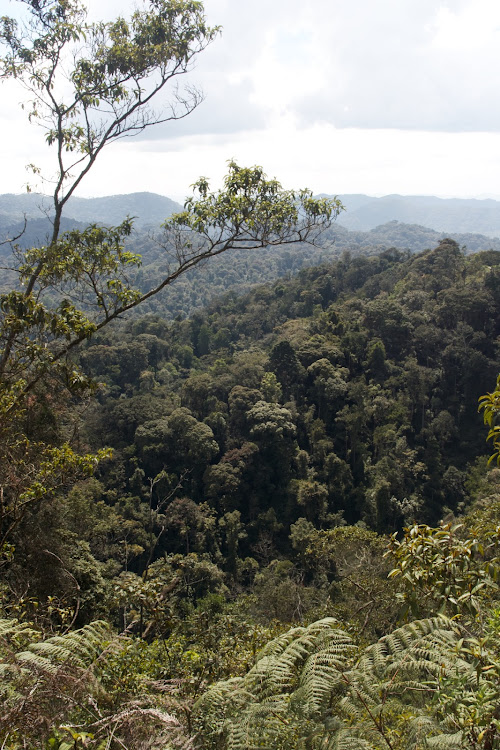
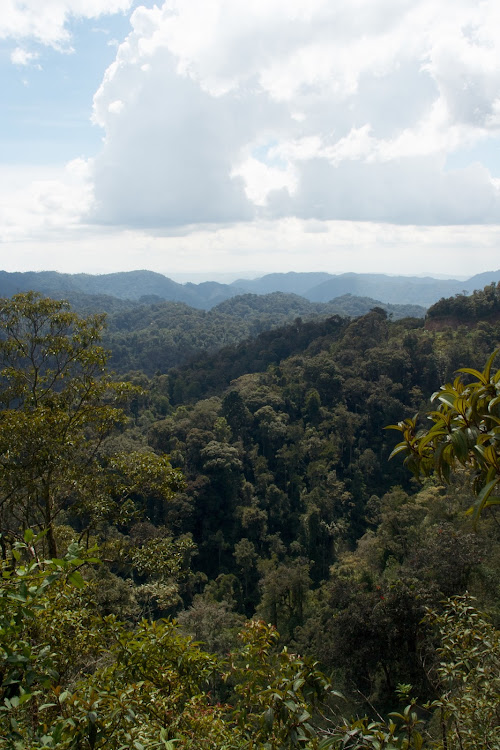

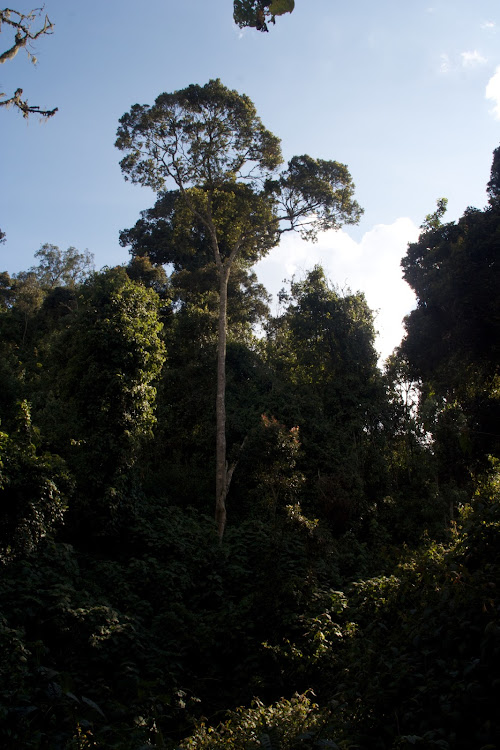
From the Nyungwe Forest NP I headed to Kigali - the capital. Even by african standards, Kigali is a dump. It is more or less an impoverished village of the little rondavel houses spread across the surrounding hills with a little big of incongruous glass and concrete buildings in the middle. I’ve spent there about a week on the internet updating my family and friends, doing little maintenance, lazing about and planning where to next. Chris - who funnily enough was ahead of me on public transport, sent me a e-mail warning me off the area in Tanzania adjacent to the Rwandan border at Rusuma Falls. He has hitched a ride in a local 4x4 and out in the sticks a minibus they were following came into a crossfire from the bush, one of the ricochets going through their front window. They managed to turn around and get away safely - and later found out that minibus also got away with two people injured, but he strongly recommended to consider different route. There were reportedly lots of Rwandan refugees living in the area and having no other way to provide for themselves they resorted to road-side robberies.
It was exactly where I was heading so I pondered for a day or two my options - the only other option being to back track through Uganda. Eventually I decided to risk it - I felt the weird big bike and my space shuttle attire, gave me the necessary element of surprise and speed to make it through a potential ambush. I would feel differently in 4x4, but I believe the crime is a business as any other and while the robbers would see a value in 4x4 which they may sell or use, there was no value for them in a bike that can still carry at most 3 people with no luggage to speak of, while burning as much fuel as a car. So after a week in Kigali I packed up and set-off to the Tanzanian border at Rusumo Falls.
Next day I went for another hike up one of the volcanoes (not tracking gorillas this time), this time with a Russian dude and Slovenian girl, who were in Africa on some kind of charity or study gig. They have travelled all the way from Malawi and then decided that gorillas were too expensive so they are not going to see them - now, they are expensive, but if you already paid all the money to get there it seemed silly to me not to go and see them. Funnily we have actually bumped into a gorilla family, but were pushed on by our guides as we didn’t pay for the privilege.
Pics from the hike:





Sneaky one of our machine gun support barely visible in his fatigues:




And the crater lake at the top at about 4500 meters:

And the way down through the rainforest:

And the tea plantations encroaching on the forest higher up:



With the main attraction - gorillas, safely stored on the memory cards, I headed back west to explore a bit more of Rwanda in a roundabout trip. I retraced back to Gisenyi and took a dirt road following the eastern shore of the Lake Kivu south to Kibuye. The dirt road snaked over the sea of typical green hills - the reason why Rwanda is called a country of thousand hills, along the eastern shore of the lake providing beautiful vistas. While this is pretty remote area, I could see that overpopulation is a problem here as there was no forest left and almost every piece of land was covered by the terrace fields.




Kibuye turned out to be a lovely little town perched on a hill above the lake. And sadly, as any other major settlement in Rwanda, was a site of one of the worst massacres during the genocide, when people who took a refuge in picturesque catholic church up on a hill were handed over the the priests to the wild crowd outside and massacred. You wouldn’t know it by looking at the place - I happened to find an accommodation in the old monastery/cloister adjacent to the church, and marvelled at the tranquility of the place. Until I found about its history, that is. There is a little museum there documenting the genocide - I didn’t go for a visit there or in any of the multitude of other genocide museums dotted across Rwanda. I knew enough about what has happened, and could almost sense in the air why, so I didn’t see a point at gawking at the pictures or even human remains of this horror. I find the modern visual fascination with death too voyeuristic, selfish and insensitive to the victims.
I went for a late lunch to the restaurant at the shore of the lake, where I’ve spotted a whitey approaching across the lake on a canoe. It turned out to be Chris from the Wadi Haifa gang - he hooked up with some expat who lived in a house on the shore of the lake and borrowed his canoe for a little trip. Over a bottle of beer or three we caught up on our travels - Chris has done gorillas trek in Congo and then managed hitchhike his way all the way to Goma, where he took a boat across lake Kivu to Bukavu at the southern tip of the lake - the place I wanted to go originally when I planned to circumvent Kivu on the congolese side. He got into massive problems there as the local honchos told him that his visa was valid only for North Kivu province and he was now in the South Kivu illegally. He managed to get out of that predicament somehow - probably paying some fake fine or something, jumped across the border to Rwanda and hitchhiked/public transported his way up to Kibuye. Well, it was probably a good thing then that I didn’t go to Bukavu. Somehow, I have lost al the pictures from Kibuye, sorry.
Next day I continued on the dirt track south all the way to Gisuma at the southern tip of the lake where I hit tar and turned east towards Nyungwe Forest NP, another place to go see chimpanzees, which is what I wanted to do. On the tar I have come across one of the most bizarre manifestation of the European guilt - the Germans, decided that the best way to heal Rwandan scars is to provide their police with a fleet of BMW GS1150s. When I first met one going in the opposite direction on otherwise empty road, I thought I’m hallucinating - and the same seemed to be true about the policeman. Later on in Kigali I found a compound that was supposedly servicing the bikes - and about half of the fleet was already there in different stages of disrepair. But it was all good and provided for a nice ice breaker at the police checkpoints all over Rwanda.
Once in the park I found accommodation in one of the chalets at the headquarters and went for a hike with an American couple, who worked in Peace Corps in Kigali. The forest was impressive, but we haven’t met any chimps - except once the guide pointed up to the canopy about 20-30 meter above saying there is a chimp there. We all strained our necks and did that “Oh, yeah!” sound, but we’ve seen bugger all. the highlight of the trek came when we were going through a dense undergrowth and out of a blue the rangers tensed noticeably and indicated to us to keep quiet. There were poacher in the vicinity and they were going to try to arrest them. I imagined hardened rebels armed up to their teeth prowling around and felt distinctly exposed in the group - I’m the opposite of the herd animal, when the shit hits the fan my instinct is to go on my own as far as possible from any group. Well, the poachers turned out to be 4 local motherly ladies getting some wood in the forest which is prohibited. They had to follow us up to the ranger station where after a little talking to they were released.
Nyungwe Forest NP:




From the Nyungwe Forest NP I headed to Kigali - the capital. Even by african standards, Kigali is a dump. It is more or less an impoverished village of the little rondavel houses spread across the surrounding hills with a little big of incongruous glass and concrete buildings in the middle. I’ve spent there about a week on the internet updating my family and friends, doing little maintenance, lazing about and planning where to next. Chris - who funnily enough was ahead of me on public transport, sent me a e-mail warning me off the area in Tanzania adjacent to the Rwandan border at Rusuma Falls. He has hitched a ride in a local 4x4 and out in the sticks a minibus they were following came into a crossfire from the bush, one of the ricochets going through their front window. They managed to turn around and get away safely - and later found out that minibus also got away with two people injured, but he strongly recommended to consider different route. There were reportedly lots of Rwandan refugees living in the area and having no other way to provide for themselves they resorted to road-side robberies.
It was exactly where I was heading so I pondered for a day or two my options - the only other option being to back track through Uganda. Eventually I decided to risk it - I felt the weird big bike and my space shuttle attire, gave me the necessary element of surprise and speed to make it through a potential ambush. I would feel differently in 4x4, but I believe the crime is a business as any other and while the robbers would see a value in 4x4 which they may sell or use, there was no value for them in a bike that can still carry at most 3 people with no luggage to speak of, while burning as much fuel as a car. So after a week in Kigali I packed up and set-off to the Tanzanian border at Rusumo Falls.
Hinksding
Race Dog
Awesome Awesome Awesome
Thank you for the writeup!
While waiting for the rest, I switch over to the Christmas safari
Thank you for the writeup!
While waiting for the rest, I switch over to the Christmas safari
shanti
Race Dog
- Joined
- Jan 27, 2009
- Messages
- 1,186
- Reaction score
- 76
- Location
- Harkerville Knysna
- Bike
- Honda CRF-1000L Africa Twin
beautiful images , great journey ! I love reading your RR's Xpat , incredible places you go to with an element of risk which makes them further interesting - thank you .
cloudgazer
Grey Hound
- Joined
- Oct 9, 2007
- Messages
- 5,135
- Reaction score
- 7
- Bike
- BMW F650GS / Dakar
I stumbled on your report this morning... and as a result have done fuckall work today, thank you very much.
Now, get back to your typing and give us another chapter.
:thumleft:
Now, get back to your typing and give us another chapter.
:thumleft:
Similar threads
- Replies
- 8
- Views
- 388
- Replies
- 1
- Views
- 165
- Replies
- 16
- Views
- 918




